Reading Anthology: Level 3
Out of the classroom and into the city: the use of field trips as an experiential learning tool in teacher education.
By Cara M. Djonko-Moore and Nicole M. Joseph
Published May 17, 2016 in Sage
This article explores the researcher’s use of field trips as an experiential learning tool in a social studies methods course as a pilot study. The researchers analyzed course evaluations and student reflection papers using document analysis to determine (a) the positive and negative aspects of utilizing field trips during the course, and (b) the ways the field trips advanced or limited pre-service teachers’ learning. The findings indicate that students found the field trips to be worthwhile but had concerns about the time and distance. They were able to make important connections to course content but reacted negatively to the inclusion of diversity in the field trips.
As the cost of college education increases, there has been an increased emphasis on the quality of instruction in higher education (e.g., Commission, 2006 ). Moreover, with an increased emphasis on teacher quality in K-12 classrooms, more attention has been placed on teacher education programs and the training and skills that graduates receive to meet the needs of all children when they enter the teaching profession (e.g., Putman, Greenberg, & Walsh, 2014 ). Teacher educators must consistently examine and evaluate their practice to ensure that they are producing teachers who will be able to meet the demands of the teaching profession.
In teacher education, experiential education, such as field experiences, has been widely used to enhance the learning of students and prepare them to be effective teachers ( McGlinn, 2003 ). Classroom teachers also use experiential education, typically in the form of field trips, to expand the school curriculum ( Kisiel, 2003 ). Experiential learning is a teaching strategy that provides concrete experiences to learners to aid their understanding of content, ideas, and concepts ( A. Y. Kolb & Kolb, 2005 ). In the form of field trips, experiential education has been shown to positively influence the achievement of children and youth, such as helping students learn multiple perspectives and access content in novel ways ( Marcus, 2008 ). Moreover, field trips provide children a unique context within which to transfer previous knowledge and acquire new knowledge ( Nadelson & Jordan, 2012 ). Such learning contexts help children recall material learned and provide a high level of engagement and enthusiasm ( Nadelson & Jordan, 2012 ). Thus, learning how to capitalize on field trips is an important part of teacher education and should receive greater attention as a teaching practice.
Experiential learning through field trips is one way teachers can incorporate specific content into the curriculum while providing a unique and challenging learning setting for children. Public school teachers do not teach content independently or in isolation; rather context standards provide a framework and guide for what should be taught in classrooms. Teachers, typically, have some autonomy on how to help children meet standards in their states. It is important that teachers have the ability to plan learning experiences based on content standards so that children can have maximum benefits from the experiences.
Within teacher education, various types of experiential learning help pre-service teachers gain valuable skills outside of traditional lectures and seminars ( Caires, Almeida, & Vieira, 2012 ; Olgun, 2009 ). Experiential learning in teacher education commonly includes practicum experiences and student teaching; through these forms of experiential learning, pre-service teachers gain hands-on experience with teachers, students, and administrators in schools ( Matsko & Hammerness, 2014 ; McDonald, Kazemil, & Kavanagh, 2013 ). Other forms of experiential learning, such as field trips and service learning, can also be effective experiences for pre-service teachers ( Zeichner, 2010 ).
This article addresses one teacher educator’s (first author) effort to implement field trips in a social studies methods course aimed at helping pre-service teachers gain a deeper understanding of course content while also modeling teaching methods that pre-service teachers might replicate with their own future students as a pilot study. The course was taken by students enrolled in a teacher licensure program during the 2010 summer term. The majority of the students were White females with three White males enrolled in the course. The course met at a suburban satellite of the main campus. The teacher educator identifies as an African American female and was a graduate assistant at the time the course was taught. The teacher/researcher decided to include an experiential education component to make the course more enjoyable, to give pre-service teachers access to the wealth of resources surrounding the university, and to model good teaching practices. Because this was the teacher/researcher’s first attempt at incorporating experiential learning in a social studies methods course, she thought it would be beneficial to examine students’ perceptions of the course, specifically with regard to the field trip components. The research questions that guided this inquiry were as follows:
Research Question 1 (RQ1): What do elementary pre-service teachers report as positive and negative aspects of field trips taken in their social studies methods course?
Research Question 2 (RQ2): How did the field trips help or hinder teacher candidates’ learning of the course material?

Theoretical Framework
Experiential learning is an approach that allows learners to create knowledge through the cycle of transforming lived experience into current patterns of thinking ( D. A. Kolb, 1984 ). Experiential learning theory was popularized by Kolb and includes four modes of learning: concrete experience (CE), reflective observation (RO), abstract conceptualization (AC), and active experimentation (AE). CE and AC are the two ends of a learning continuum; CE is the ability to be involved in new experiences and make observations without bias, and AC is the ability to “create concepts that integrate observations into logically sound theories” ( D. A. Kolb, 1984 , p. 30). RO and AE are also polar opposites on a continuum; RO is the ability to observe and reflect on experiences from different perspectives, and AE involves using knowledge to solve complex problems. According to D. A. Kolb (1984) , the learner must become adept at using all four learning modes. Figure 1 illustrates the four phases of D. A. Kolb’s (1984) learning cycle and shows how learners can move from one phase to the next. According to D. A. Kolb (1984) , all four learning modes are critical for student learning, although the mode that students begin with in the cycle can vary (see Figure 1 ).
Figure 1. Kolb’s Learning Cycle. Source. Adapted from D. A. Kolb (1984). Note. Four phases of Kolb’s learning cycle.
This framework is appropriate for this pilot study because it illuminates the specific components that are necessary for experiential learning to be successful for learners, specifically reflection and a connection to previous understandings. Although the actual learning experience is critical, the other components of the cycle are also necessary to ensure that the experience is meaningful and results in the formation of new knowledge. D. A. Kolb’s (1984) framework defines and places equal emphasis on all four parts of the learning cycle, so the framework is a useful tool to objectively critique the implementation of a new experiential learning component in a course.
In reviewing the literature, the researchers identify two relevant bodies of research: experiential learning in teacher education in the form of field trips and curriculum standards that lend themselves to experiential learning. Demarcations in the teacher education literature come mainly in the various examples from undergraduate, graduate, and teacher education students in different methods courses; however, the overall studies examined suggest that regardless of the level or program, experiential learning can be a critical experience that deepens and empowers student learning. In this section, the researchers review published literature in each area.
Field Trips in Teacher Education
Teacher educators have successfully used field trips to enhance pre-service teachers’ teacher preparation. The field trips were planned for different purposes and as a part of a variety of courses. For example, Johnson and Chandler (2009) describe the process of secondary mathematics pre-service teachers in a mathematics methods course attending a field trip to a battleship to plan an informal learning experience connected to math content for high school mathematics students. Through the experience, the pre-service teachers were able to plan for informal learning activities with their future students and make concrete connections to mathematics content. Johnson and Chandler (2009) noted that the pre-service teachers described the field trip as a fun, real-life application and a break from the normal routine.
In a social studies course, Yeşilbursa and Barton (2011) published results from an investigation that included a field trip to a local museum as a focus on heritage education, which is an approach to teaching history and culture using community sites and resources. They found that all of the enrolled pre-service teachers liked the trip and were able to make connections to heritage education. Moreover, they made connections to their future teaching practices by sharing their desire to use heritage places as teaching tools. The teacher candidates also saw the value of historic sites in teaching because they are concrete and make history interesting.
Similarly, in another content area, Tal (2001) reported on a field trip that 13 pre-service science teachers attended as part of a science methods course. Revial (2001) found that the pre-service teachers who participated in the single, full-day field trip found the science learning environment enriching and useful for teaching children content and improving engagement. Moreover, Revial (2001) described the necessity of reflection to enhance the teaching and learning process when field trips are used.
The Learning Process Using Field Trips
Field trips are also beneficial for pre-service teachers because of opportunities the experiences provide for them to make real world connections and engage in an authentic learning process. Several studies demonstrate how field trips were used as a part of the learning process for pre-service teachers, including constructivism, reflection, and content knowledge.
Constructivism is a framework heavily emphasized in teacher education courses, and Broome and Preston-Grimes (2009) designed their study to assist pre-service teachers in their understanding of constructivism. The pre-service teachers gathered information about a field trip site through in-class projects and completed a chart that detailed what they knew and wanted to learn (K-W-L chart) to document their prior knowledge and to generate specific questions for the trip.
Reflection, a component of experiential education, is also an important teaching strategy for children. Broome and Preston-Grimes (2009) and Pence and Macgillivray (2008) both included reflection components in their field trips with students. After the trip designed by Broome and Preston-Grimes (2009) , the pre-service teachers utilized reflection to discuss larger issues such as political, social, and economic trends that emerged. Pence and Macgillivray (2008) also stressed the importance of reflection as part of the learning process during their study, where 15 American teacher education students taught Italian children for 4 weeks in Rome, Italy. The authors noted that student reflection was critical to help students debrief and troubleshoot the challenges they encountered. In both instances, the researchers found that reflection helped the pre-service teachers make stronger connections to course content and grow professionally. More important, in both studies, the researchers followed a model of a learning process that their future students could replicate with their children in the future.
Content knowledge is typically a major component of course work that pre-service teachers take. Leinhardt and Gregg (2000) engaged in a learning process with their pre-service teachers to help them increase their content knowledge and attitudes toward the history from the Civil Rights Era. The pre-service teachers completed a web-making activity before their trip to a civil rights museum and repeated the activity after the field trip. Guided discussions were also woven into the experience. The authors found that, on average, pre-service teachers doubled the quantity of information they recorded on their webs, with more than half of the pre-service teachers tripling the amount of details included. Thus, the field trip combined with additional learning activities and discussions proved beneficial in meeting the objectives of the course.
Overall, these articles demonstrate that field trips can be used successfully to assist pre-service teachers in meeting course goals including enhancing their understanding of constructivism, engaging in reflection to make deeper connection to course content, and mastering content knowledge.
Curriculum Standards
According to the National Curriculum Standards for Social Studies (NCSS), there are 10 social studies themes that should be included in the curriculum ( National Curriculum Standards for Social Studies [NCSS], 2010 ). These 10 themes include culture; time, continuity, and change; people, places, and environments; individual development and identity; individuals, groups, and institutions; power, authority, and governance; production, distribution, and consumption; science, technology, and society; global connections; and civic ideals and practices. The standards for teaching social studies are based on these 10 themes; thus, it is important that teachers are able to embed them in course content, activities, and discussions ( Golston, 2010 ; Herczog, 2010 ).
Because culture is a central theme in social studies, many teacher educators use social studies methods courses as a locus for multicultural education and issues of diversity. For example, Fitchett, Starker, and Salyers (2012) contend that integrating a culturally responsive paradigm in social studies methods can increase future teachers’ aptitude for working with diverse students in the future and increase their cultural competence. Heritage education, a study of history and culture focused on material cultures and built environments, can also be included in social studies education ( Hunter, 1988 ). Material cultures and built environments are artifacts, buildings, historic sites, values, ideas, and traditions that have been passed from one generation to the next ( Hunter, 1988 ). Yeşilbursa and Barton (2011) discussed the importance of helping teachers and students take ownership of local historic sites, artifacts, and traditions. They merged the study of history, another major theme in the social studies, with historic places, cultural landscapes, buildings, and artifacts, both written and pictorial.
The social studies course for the present study included content for young children; thus, standards from the National Association for the Education of Young Children (NAEYC) are relevant to the pilot study. NAEYC standards for early childhood teachers suggest that teacher educators use a variety of methods to ensure that teacher candidates gain content knowledge and develop a large repertoire of teaching methods to help children construct knowledge ( National Association for the Education of Young Children [NAEYC], 2009 ). According to the NAEYC (2009 ), teacher candidates must have experiences in their methods courses, including social studies, that will enable them to “use their own knowledge and other resources to design, implement, and evaluate meaningful, challenging curricula that promote comprehensive development and learning outcomes for every young child” (p. 15). Mindes (2005) posits that social studies instruction should be child-centered and allow for varied projects and activities, such as field investigations and visits to local community resources.
The review of literature suggests that experiential learning in higher education has been successfully implemented for students. Moreover, national standards suggest that teacher candidates acquire tools that will enable them to create meaningful social studies experiences inside and outside of the classroom. Because experiential learning, specifically field trips, have been shown to be beneficial, researchers should document and share their personal efforts to implement similar activities. The studies in this review included field trips in teacher education courses that included a single trip as a part of the course. This pilot study is different in that the course took place over the summer (5 weeks), and the teacher educator embedded three field trips plus an independent excursion in the course. These differences may allow for replications in other teacher education programs.
This pilot study follows a case-study design. The focus was on the experiences of students and the teacher/researcher in a single college course. The teacher/researcher recognized the value of a course study after she received the course evaluations; thus, she designed and implemented the pilot study a posteriori. Institutional Review Board (IRB) approval was granted after the conclusion of the course and gave the researchers permission to evaluate course evaluations and course materials. In total, 17 course evaluations were completed. Although IRB was granted, the researchers asked for consent from the students to analyze and include their reflection papers.
Participants
The participants constituted a sample of convenience and consisted of students enrolled in the social studies course taught by the researcher. There were 24 students enrolled; three of the students were male and 21 were female. All of the students were White except for one student who was of Middle Eastern descent. All students participated in field trips and field trip reflections as part of the course requirements. Each student had the opportunity to complete a course evaluation per university procedures and guidelines. Because the course evaluations were collected anonymously, no participant data are available other than their enrollment in the course. Five students gave permission for their reflection papers to be analyzed. These participants included one male and four females, all of whom are White.
Course Context
The social studies teaching methods course that was the basis for the present pilot study was taught at a public university in a major city in the northeastern United States. The university serves about 30,000 undergraduate students and has multiple campuses. The College of Education serves about 3,000 students, most of whom are teacher licensure students. The main campus is located in the city, while two satellite campuses are located in the surrounding suburbs. Because of the location of the university, several community resources were available for experiential learning activities. These resources include historical sites, museums, historic churches, and national parks.
The course addressed issues and methods in teaching elementary social studies for grades nursery through 6. The emphasis was on teaching for understanding and investigating resources and curriculum in social studies. Experiential education was not a main focus of the course although the teacher/researcher chose it as a teaching strategy. This course provided a detailed examination of the content and methodology needed for teaching history, geography, and the social sciences in the elementary school curriculum. Furthermore, it sought to develop the students’ appreciation of the interdependence of cultural groups and use of inquiry and problem-solving methods to understand the historic, geographic, social, and economic dimensions of an interconnected world society. These themes were very important to the teacher educator and are an important part of NAEYC standards.
The teacher/researcher incorporated experiential learning through a series of three required class field trips and one independent excursion. Pre-service teachers attended three field trips in the local city that focused on American history and culture. The teacher/researcher selected these trips in advance of the course so that appropriate arrangements could be made. Following each trip, the pre-service teachers wrote a reflection paper based on guidelines that can be found in Appendix A . The pre-service teachers also selected a site to visit independently with no more than two other classmates.
Field trip 1
The first class field trip was a visit to a replica of the Niña. The trip included a guided tour of a historically accurate replica of the Niña and a view of the Pinta, two ships that Columbus sailed in the late 1400s and early 1500s. According to the Columbus Foundation (2012) , the Niña is a replica of the ship on which Columbus sailed across the Atlantic on his three voyages of discovery to the new world, beginning in 1492. Columbus sailed the ship more than 25,000 miles and was last heard of in 1501. The new Niña is a floating museum that visits ports all over the Western Hemisphere. This trip was chosen because it was directly related to colonial history and available in the area for only a short time.
Field trip 2
The second field trip was a visit to a historic African American church founded in the late 1700s. In addition to a guided tour of the actual church grounds, the students visited the archives contained in the lower level of the building. There was also a small museum that the pre-service teachers were guided through. This trip was connected to the course because it (a) celebrated the history of African Americans before, during, and after slavery and (b) contained a variety of primary sources that could be used to aid in the construction of history.
Field trip 3
The third field trip was a visit to a church and burial ground that is an important landmark connected to the United States’ Revolutionary War history. Many signers of the Declaration of Independence attended the church, and many notable figures are buried in the burial ground. This field trip was connected to course content and discussion about colonialism and the Revolutionary War. Attendance at the burial ground was required, but a visit to the church site was optional.
Independent excursion
In addition to the three class field trips, pre-service teachers were required to choose an excursion based on their own interests. They could visit a museum, cultural center, or historical site. Pre-service teachers were required to meet or speak with a docent, museum guide, or other administrator to learn about program offerings for school-aged children and youth (based on guidelines that can be found in Appendix B ). It was recommended that pre-service teachers choose a location that was related to their final project, which was a unit plan (a field trip for their students was a required component of the unit plan). They were given a class day to conduct their independent excursion, and no more than three pre-service teachers were allowed to visit the same location. Some of the pre-service teachers chose to visit sites that were close to their homes, while others visited sites that were in the same city as the class field trips.
Data Sources
To answer the research questions, this pilot study focused on pre-service teachers’ reflection papers and their course evaluations. In addition to student reflection papers and student course evaluations, the researchers collected course materials including the course syllabus, assignment guidelines, and course notes for analysis.
Data Collection/Procedures
The teacher/researcher administered formal course evaluations at the end of the semester using approved university-wide procedures. The university posted course evaluations from all participants via a web-interface that the teacher/researcher could access. After the conclusion of the course, the teacher/researcher contacted students via e-mail to ask for consent to use their field trip reflection papers and independent excursion reflection papers. Five students gave consent to have their reflection papers analyzed for potential publication. These papers were available to the instructor via Blackboard. There is no link between data set by respondent due to anonymous course evaluations.
Data Analysis
The researchers examined all anonymous student comments included in the course evaluations and isolated all comments directly related to the field trips. There were a total of 169 anonymous comments from 13 different students who specifically addressed the field trip portion of the course; a small number of course evaluations included no comments. Anonymous comments from each student were separated as a part of the course evaluation process. The researchers compiled all relevant comments into a new file for later analysis. Five pre-service teachers in the course gave consent for their reflection papers to be included in the analysis. 1 These student reflections were read multiple times to gain an overall sense of the students’ experiences.
The researchers entered the isolated course evaluation comments and the student reflection papers into Qualitative Data Analysis (QDA) Miner software for a more formal analysis. QDA Miner is a qualitative data analysis tool that allows researchers to code and annotate text documents. The researchers used open coding to analyze the data. Initially, the researchers applied 13 codes to the students’ course evaluation comments and reflections, such as cultural bias, extension, and choice of trip. She then read all documents a second time once all codes were determined. Second readings revealed several comments that corresponded with the 13 codes that were identified during the first readings. The third reading of the data provided an opportunity to collapse the 13 codes down to four, which were more theoretical themes that illustrated broader nuanced meaning. These four themes are (a) constructive components of field trips, (b) unfavorable components of field trips, (c) field trips advance social studies knowledge, and (d) field trip experiences foster replication for future teaching. These themes will be discussed in the section “Findings.” An overview of themes and codes can be found in Table 1 .
Table 1. Overview of Categories and Codes.
- View inline
- Download powerpoint
In this section, we discuss the four themes that emerged from the data analyses, including (a) constructive components of field trips, (b) unfavorable components of field trips, (c) field trips advance social studies knowledge, and (d) field trip experiences foster replication for future teaching. This section is organized around the research questions with exemplar quotes to help illustrate the theme.
What Do Elementary Teacher Candidates Report as Positive and Negative Aspects of Field Trips Taken in Their Social Studies Methods Course?
Overall, teacher candidates reported both positive and negative aspects of the field trips. Positive aspects included tour guides’ knowledge, the uniqueness of the field trips, and pre-service teachers’ ability to make connections to social studies course content. Negative components were the time and money necessary for the field trips, in addition to the perceived bias toward specific racial groups.
Constructive components of field trips
According to student evaluations and reflection papers, there were several positive aspects about using field trips as experiential learning opportunities in the course. The positive comments were mostly written in the reflection papers. Generally, the pre-service teachers found the field trips to be worthwhile and memorable, and they reported that they gained new knowledge. The pre-service teachers also found the tour guides knowledgeable. Below are several exemplary quotes that illustrate ways in which pre-service teachers thought the field trips were positive.
On this trip, I learned a lot of interesting facts that I never knew before.
This statement suggests that the field trips filled a gap in knowledge for this pre-service teacher regarding important historical events. One particularly memorable piece of knowledge was that the tar pitch used in the construction of the Niña is the same substance described in the construction of Noah’s Arc of the Bible. Another interesting fact the students found fascinating was that the crew of the Niña consisted of adolescent boys who slept above deck and were consistently exposed to saltwater and harsh temperatures.
I think this trip was worthwhile because of how accurately the ships were built, the experiences were very authentic, and real.
This comment reveals that this pre-service teacher values learning experiences that are real and authentic. Indeed, the creators of the Niña were very precise in their construction of the ship, down to the tools used for construction. This care and precision helped to create an experience where the pre-service teachers could actually travel back in time and experience the Niña as it was in the 1500s.
I was unaware, even, of the existence of the cemetery; the whole experience was new.
This quote shows how the trip to the church burial grounds served to fill a gap in knowledge of local educational resources. There are many local resources that can be used to aid in the development of social studies knowledge, and exposing the pre-service teachers to some of these resources was a major goal of the course.
As I mentioned, I’m more present minded, and therefore had no knowledge whatever of local black history, nor local history of any color, that I did not read in a textbook.
This quote demonstrates how this field trip raised the consciousness of this pre-service teacher about (a) the presence of local historical sites, and (b) African American history and culture.
I found the high level of education, qualification, and experience of our guides to be most enlightening.
This comment suggests that tour guides’ knowledge is an important factor for teachers to build confidence in the historical facts. When students see their instructors and leaders as knowledgeable experts, they are able to connect more in depth with the experience and ask relevant questions that will aid in their learning. Thus, having knowledgeable tour guides is an important component of a successful field trip experience.
Overall, the comments suggest that the pre-service teachers appreciated the opportunity to experience something new and different. Moreover, the comments suggest that the trips had a greater impact on their learning than previous traditional educational experiences. There were positive aspects mentioned from all three required field trips and from the required independent excursion visit. Not only did students experience something new and different, they also gained an appreciation for resources in their community. Thus, the trips served to help the pre-service teachers learn social studies content in a manner that was memorable and engaging, and they learned about potential resources they could use to enhance their own teaching.
Connecting these comments to D. A. Kolb’s (1984) experiential learning framework, the pre-service teachers had experiences that could be built upon through reflection to aid them in their learning of social studies concepts. These comments do not suggest, however, that the pre-service teachers progressed through all four phases of the learning cycle. The pre-service teachers did the required reflections, but the comments do not suggest that they integrated their experiences into new understandings about social studies teaching methods (AC) or used the experiences to solve problems (AE). Some teacher candidates made connections to their future teaching, but the connections were vague and lacked details that would demonstrate deep understanding.
Unfavorable components of field trips
The pre-service teachers expressed positive comments about the field trips, yet they also shared unfavorable aspects about their experience. These negative comments were mostly found in the course evaluations. The codes in the negative category included, “time,” “distance,” “choice of trip,” and “cultural bias.” Consistent with previous studies in the literature, several pre-service teachers mentioned the distance from the classroom to the trip sites as problematic. Below are student perspectives on the limitations of the field trip: Make a couple of the field trips closer to [the university]. I think it is very inappropriate to have our field trips in [the city] when we are all [suburban] students.
These comments suggest that these pre-service teachers who attended classes in a suburban setting found traveling to the city for field trips to be problematic. This might mean that they lacked an understanding of the value of visiting the city if they did not plan to teach in an urban area. The second of the two comments also suggests that one pre-service teacher thought his or her future students would not be interested in or benefit from trips to an urban city center.
I would rather the field trips be local. We had to travel to [the city] once a week and that costed [sic] us extra money.
This comment suggests that the burden of traveling was problematic for this pre-service teacher; probably due to gas and parking. Admission to sites was free for pre-service teachers, and they were encouraged to carpool. Several pre-service teachers chose sites for their independent excursion that were close to their homes for the visit they selected, which further indicates that distance was a barrier. However, other students returned to the city for their independent excursion. This action shows that some of them were open to exploring resources outside of their immediate community and possibly their comfort zone. The distance to the field trip sites required travel time and money for parking, although no sites were more than 30 miles from the assigned class location.
More troubling, however, are the comments that suggested the trips were biased toward African Americans.
I felt some of the field trips were geared toward African Americans and their history.
This comment, although seemingly neutral, was written in the course evaluation as a critique as evidenced by the comment section it was included under (What aspects of the course distracted from your learning?). This comment implies that the inclusion of African American history was a negative aspect of the course. This pre-service teacher does not feel connected to African American history or believe it is important for inclusion in the course.
The field trips chosen were biased in that somehow African culture was the main focus.
This pre-service teacher’s comment suggests that too much course content was focused on African American history. He or she did not offer a suggestion on other histories to include in the course content.
All trips were highly focused to African American heritage.
This pre-service teacher suggests that a negative aspect of the course was a focus on African American history and culture. This comment demonstrates a lack of awareness of the importance of knowing the histories of different cultural groups as a teacher.
These concerns were only expressed in the course evaluations after the conclusion of the semester; therefore, the teacher/researcher was unable to address these concerns during the class. Research indicates that White pre-service teachers are sometimes resistant to the inclusion of diverse themes in college courses ( Sleeter & Owuor, 2011 ). This could explain why students perceived too much emphasis on African Americans. Moreover, because the teacher/researcher identifies as African American, this could have enhanced the feeling of bias the students felt. Nevertheless, pre-service teachers should be reminded that African American history is American history and, thus, is important for everyone to examine at some point in their academic careers. As future teachers, it is very likely that they will interact with African American students. Having knowledge of these students’ histories and culture could increase their effectiveness and ability to teach in culturally responsive ways ( Cruz, 1997 ; Ladson-Billings, 2000 ). Culture is a main strand in the social studies standards; inclusion of African American culture in a social studies methods course is necessary to cover recommended content ( NCSS, 2010 ).
How Did the Field Trips Help or Hinder Teacher Candidates’ Learning of the Course Material?
The data suggest that the field trips helped the pre-service teachers to make concrete connections to course content, specifically pedagogical knowledge about pre-colonial, colonial, and antebellum history. The pre-service teachers were also exposed to local African American history and culture. Moreover, the data suggest the field trips helped some teacher candidates to consider how they might include experiential learning with their own students. Because the pre-service teachers noted bias in the selection of the field trips toward African Americans, it is possible that the field trips hindered their learning and acceptance of diversity and culture.
Field trip experiences foster replication for future teaching
The future actions category included comments that alluded to pre-service teachers’ desire to incorporate aspects of the field trips into their future teaching. The codes in this category included “replication” and “extension.” Many pre-service teachers commented that they would take their students on a similar field trip, although they understood that their students’ ages and maturity would be an important factor.
As to whether I would take my students on a similar trip, it would depend upon the students.
This pre-service teacher does not seem to be completely sold on the specific trips he or she experienced in the course. Some excursions, such as the trip to the historic church, may be inappropriate for very young children while others, such as the trip to the Niña, may be better suited for youngsters. This quote shows this pre-service teacher is open to trips so long as they are in the best interest of the students he or she teaches.
I would consider taking my class on this trip, because it was so informative and real.
This quote shows that this pre-service teacher was very enthusiastic about the trip to the Niña. He or she is very open to the idea of incorporating this type of experience with his or her future students.
I think that the museum would be appropriate for the students that I plan to teach because I plan on teaching around third or fourth grade and at that age.
This pre-service teacher commented on his or her independent excursion to a museum in the city. He or she chose this site based on the grade level and content for a third or fourth grade classroom and found it very useful. He or she is very open to the museum site for future students.
Just being in the historic area is enough, but going to the burial grounds can give students a glimpse into the past.
This pre-service teacher’s comment suggests that he or she saw the value in exploring the historic areas in the city, even if no tour was specifically planned. He or she felt the trip to the burial ground was an added bonus to an area already rich with history that could be explored.
It is important to note that not all schools have resources to send students on field trips. Other opportunities exist for exploring community resources such as virtual field trips. Teachers can share their own experiences with students, along with photographs and artifacts. Even though schools differ in their ability to provide trips for students, if teachers see them as important, they can still offer experiences to students.
Several students provided ideas for extending the field trips with additional activities and lessons with their own students. The two trips the students were able to connect most easily with were the trip to the Niña and the trip to the burial ground.
Given the opportunity and interest, I might even have students engage more fully in the sailor’s lifestyle.
This pre-service teacher is considering additional activities that might go along with the trip to the Niña. The guides gave a lot of interesting facts and details about the sailors that this pre-service teacher thinks may be worth exploring with his or her future students.
The students could write journals as someone from that time, or make a fact book about their job, and what it entails.
Again, this pre-service teacher considered the trip to the Niña and how it could be extended. Infusing reading and writing was important to this pre-service teacher because of its strong focus in the early grades.
For kids to grasp this concept it would be fun for them to build a small replica of the ship, after doing research, and visiting these life size replica ships.
This pre-service teacher sees an opportunity to connect social studies content based on the Niña trip to mathematics and engineering. Concepts such as scale, measurement, and weight would be necessary to include to create replica ships. This is an example of a hands-on activity that would be very appropriate for children.
Doing my unit plan on colonial America this would be a great field trip to take students on because of the historical content of the trip.
This pre-service teacher sees a connection between the burial ground and a unit on colonial America that he or she planned as a course requirement. He or she sees the value of helping students learn historical content in a unique setting.
The pre-service teachers were able to make connections between their experiences at the field trip sites and their future teaching. Many of them seriously considered ways to incorporate similar experiences with their future students by providing concrete examples of extension activities. The use of field trips helped the pre-service teachers see the benefit of experiential learning in the teaching of social studies content and think about how they might extend similar trips with additional lessons and activities.
Field trips advance social studies knowledge
The final category included pre-service teachers’ comments that relate to teaching social studies, engaging students in social studies activities, or learning social studies. These codes included, “understanding,” “opportunities,” “culture,” and “fun.”
Several students mentioned in their reflection papers how the trips enhanced their knowledge of social studies.
My understanding of social studies has been enhanced in that I now see the discipline as more dynamic.
This comment shows how the field trips made social studies come alive for this pre-service teacher. Indeed, social studies can be taught in a variety of ways such as through textbooks and worksheets or interactive experiences. This pre-service teacher saw how social studies can be more interactive and dynamic than he or she previously realized.
The trip enhanced my understanding of social studies in that it can be taught almost anywhere as any location.
This pre-service teacher notes how social studies does not have to be confined to the classroom. With a little planning, he or she realizes that social studies can be brought into many experiences and taught in non-traditional ways.
Social studies can be found all around and it can be affordable and meaningful, which I discovered through this field trip.
This pre-service teacher discovered that there are many local sites and locations that can be used to assist in the teaching of social studies. Many local resources are free and/or low-cost, especially for schoolchildren.
This trip enhanced my appreciation and understanding of social studies because social studies was never really that fun for me.
Social studies should be taught in a way that is fun, dynamic, and engaging. This pre-service teacher saw firsthand that field trips are a way to bring social studies content to life.
While on the trips, the pre-service teachers also learned interesting facts that helped to build their social studies content knowledge.
I don’t know much about Columbus, only that he sailed in 1492 and has a very controversial national holiday named after him. On this trip, I learned more about his background and the hardships he encountered throughout his voyages.
This pre-service teacher explained that the information shared by the tour guide during the trip to the Niña helped him or her learn more about Christopher Columbus besides the common facts that most people know (i.e., Columbus sailed with three ships in 1492). This memorable experience will enable him or her to teach more thoughtful, engaging, and authentic lessons to students.
Seeing things firsthand is exactly what helps to shape our own memories, ideas, and knowledge base.
This pre-service teacher expressed the importance of taking ownership of knowledge through firsthand accounts and experiences.
It is important for both students and teachers alike to utilize the educational resources that are right in their own communities, particularly when they are lucky enough to live outside a city that is so rich with history and opportunities for hands-on-learning.
It is easy for teachers to get caught up in the day-to-day ins and outs of managing a classroom and preparing lessons. This pre-service teacher expressed the importance of using community resources to enhance students’ learning. Teachers will not use community resources if they are not aware of them. The use of field trips helped this pre-service teacher to become more aware of the resources that surround schools and communities and potentially opportunities to use them in his or her own teaching.
The findings indicate that the pre-service teachers found the field trips to be worthwhile and beneficial. Consistent with previous research, experiential learning in the form of field trips was received positively by pre-service teachers ( Broome & Preston-Grimes, 2009 ; Johnson & Chandler, 2009 ). The participants found the trips to be memorable and were able to make connections to course content and teaching methods. As a result of the trips, some pre-service teachers explored extension activities and the possibility of similar trips with their future students. Nevertheless, the data do not suggest that the teacher candidates progressed through all four phases of D. A. Kolb’s (1984) learning cycle to gain the most knowledge and understanding from the field experiences.
The findings also suggest that field trips are a way to include local history and culture in course content and culture in the social studies curriculum. According to Yeşilbursa and Barton (2011) , it is important that heritage education be a part of the social studies curriculum; this includes historic places and cultural landscapes. Indeed, the city was rich with resources, which the pre-service teachers discovered throughout the course. Culture is central to the teaching of social studies, and the field trips were a great way for pre-service teachers to learn about different aspects of American culture, such as colonial life and African American traditions. Although reflections were required, the instructor should have done more to ensure that the pre-service teachers could see the value in learning about alternate historical perspectives, specifically African Americans’. According to D. A. Kolb (1984) , concrete experience involves the ability to experience new situations without bias. More preparation on the part of the instructor could have aided the teacher candidates in achieving this part of the learning cycle.
The pre-service teachers expressed concerns about time and distance. This challenge was also found in non-teacher education courses that included experiential education components ( Dardig, 2004 ; Gill, Adams, & Eriksen, 2012 ). Anticipating concerns about hardships the trips might cause, all pre-service teachers were notified about the trips prior to the beginning of the course, and a few students chose to enroll in a different section. Moreover, because the allotted class time was 4 hr per session, the teacher/researcher was able to provide time for travel to and from the suburban campus. Nevertheless, distance and time remain a challenge to successful implementation of experiential learning experiences in college courses, particularly when sites are selected by the instructor.
The most surprising finding is that some teacher candidates reacted negatively to the inclusion of diversity in the field trips. One of the field trips included an African American historical site, yet the instructor did not connect the trip to pre-service teachers’ prior knowledge nor allow them to reflect on why such a trip was important. Some of the pre-service teachers, therefore, did not see the relevance of the trip or make personal connections. The reflection papers were all positive, but the anonymous course evaluations revealed that some of the pre-service teachers perceived that the trips focused too much on African Americans. Incidentally, only one of the three trips was focused exclusively on African American history; the other two trips focused on American history as traditionally defined (e.g., Eurocentric). Fitchett et al. (2012) posit that social studies remains a topic that is heavily influenced by Eurocentric and Westernized ideas, even in the midst of a changing student demographic.
According to social studies standards, it is critical that future teachers have knowledge and appreciation for perspectives that are different from their own, which is why the trip to the African American church was included ( NCSS, 2010 ). Social studies teachers must not only be able to identify and understand alternate perspectives, they should be able to help children to consider alternate perspectives ( NCSS, 2010 ). However, it appears that some of the pre-service teachers were resistant to the inclusion of diverse themes. Research by other scholars indicates that short-term experiences are not sufficient to improve attitudes toward diverse cultures; a more formal and structured approach is necessary ( Fitchett et al., 2012 ; Langer, Escamilla, & Aragon 2010 ; Tidwell & Thompson 2008 ). Specific teaching methods that might have helped the pre-service teachers to see the importance of diverse themes and experiences include structured class discussions encouraging divergent views ( Arthur & Achenbach, 2002 ) and making concrete connections between the field experiences and the pre-service teachers’ lives ( Sevier, 2005 ), and reviews of social studies standards that include culture and diversity. It is critical that future teachers appreciate and value the inclusion of alternate perspectives and histories within social studies.
Methodological Limitations
There are several limitations of the pilot study. One of the limitations includes the availability of data sources. Additional data sources, such as interviews, post field trip activities, and documented class discussions would have added to the reliability and triangulation of the data. The teacher/researcher, however, did not plan the pilot study until after the course ended and the course evaluations were posted. Thus, it was impossible to generate data after the fact. Similar studies should make an effort to include stronger data sources.
Other limitations of this pilot study include the small sample size and the limited number of reflection papers included for analysis. As with most qualitative studies, the results are not generalizable to larger contexts. A teacher educator with a similar course context and classroom makeup may find different results. In addition, the small number of reflection papers included for analysis may not have been representative of the entire class. Had more pre-service teachers given permission for their papers to be included, additional themes may have emerged that could affect the findings. Nevertheless, the inclusion of the course evaluations ensured that all pre-service teachers’ views were represented. Moreover, course evaluations may be more authentic than reflection papers because course evaluations are ungraded and not reviewed by the instructor until after grades have been posted. There was no pre-test or post-test given to participants. Follow-up studies should include a pre- and post-test to confirm the findings.
Field trips can be an effective way to implement experiential learning in teacher education. In social studies education, field trips are particularly useful because they can coincide with course content, particularly social studies standards and multiculturalism. It is vital that teacher educators consider their students when designing field trips; some pre-service teachers may not immediately see the purpose for certain experiences, particularly if they are not aligned with their personal histories. Teacher educators must not only provide time for reflection, but must also make concrete connections for pre-service teachers so they gain the greatest benefit from the field trips. Some pre-service teachers may be resistant, but it is critical that instructors embed diverse themes and histories of those who have been marginalized into their courses so that future teachers will better understand and be able to teach diverse students.
Recommendations for Future Research
The authors recommend that future research include more studies of teacher education courses that include an experiential learning component, such as field trips. These studies should include more robust research methodologies such as pre-post surveys, participant interviews, regular journal reflections, and documented class discussions. In addition, participation from a larger percentage of the class members would add to the integrity of future studies. Future studies into experiential learning within teacher education should strive to include the opinions and interests of the participants when planning activities. We also recommend briefing and debriefing discussions or activities before and after the experiential learning activities so that participants are fully aware of what to expect, the purpose of the activity, connections to course content, and have opportunities for reflection.
Reflection Paper Questions
Where did you go?
Did you generally find the trip worthwhile?
What did you learn or experience that was new to you?
Might you consider taking your future students on a similar trip? Why or why not?
How did the trip connect to your personal content knowledge, pedagogical knowledge, and/or pedagogical content knowledge?
How has the trip enhanced your understanding/appreciation of social studies?
Independent Excursion Reflection Questions
Was the museum appropriate for the students you plan to teach? Why or why not?
Was the docent, guide, or administrator helpful and knowledgeable in regards to student programming?
Article Notes
Declaration of Conflicting Interests The author(s) declared no potential conflicts of interest with respect to the research, authorship, and/or publication of this article.
Funding The author(s) received no financial support for the research and/or authorship of this article.
↵ 1. All student course evaluations were included due to anonymous collection procedures per Institutional Review Board (IRB). Only reflections from students who gave expressed written permission for their course work to be analyzed were included in the analysis per IRB.
- © The Author(s) 2016
Author Biographies
Cara M. Djonko-Moore is an assistant professor of early childhood education at the University of Tennessee. Her research is focused on understanding teacher attrition as influenced by school environment and the development of culturally responsive pedagogy to engage children in relevant learning.
Nicole M. Joseph is an assistant professor of mathematics education at Vanderbilt University. Her current research includes examining the mathematics education of Blacks during segregation, 1854 – 1954 at 25 Historically Black Colleges and Universities accross the U.S. More broadly, her research interests include issues of race, class, and gender in mathematics education, with a particular focus on Black girls.
- Arthur N. ,
- Achenbach K.
( 2002 ). Developing multicultural counseling competencies through experiential learning . Counselor Education and Supervision , 42 , 2 – 14 . doi: 10.1002/j.1556-6978.2002.tb01299.x
- Broome J. P. ,
- Preston-Grimes P.
( 2009 ). “Doing” community civics: Connecting pre-service teaching and social studies standards to study local problems . Social Studies Research & Practice , 4 , 169 – 177 .
- Caires S. ,
- Almeida L. ,
( 2012 ). Becoming a teacher: Student teachers’ experiences and perceptions about teaching practice . European Journal of Teacher Education , 35 , 163 – 178 . doi: 10.1080/02619768.2011.643395
- ↵ The Columbus Foundation . ( 2012 ). Discover Columbus’ ships . Retrieved from http://www.thenina.com/index.html
- ↵ Commission . ( 2006 ). A test of leadership: Charting the future of U.S. higher education. A report of the commission appointed by Secretary of Education Margaret Spellings . Washington, DC : U.S. Department of Education .
( 1997 ). Walking the talk: The importance of community involvement in preservice urban teacher education . Urban Education , 32 , 394 – 410 . doi: 10.1177/0042085997032003005
- Dardig J. C.
( 2004 ). Urban connections: A course linking college students to the community . College Teaching , 52 , 25 – 30 . doi: 10.3200/CTCH.52.1.25-30
- Fitchett P. G. ,
- Starker T. V. ,
( 2012 ). Examining culturally responsive teaching self-efficacy in a preservice social studies education course . Urban Education , 47 , 585 – 611 . doi: 10.1177/0042085912436568
( 2012 ). Engaging with the (un)familiar: Field teaching in a multi-campus teaching environment . Journal of Geography in Higher Education , 36 ( 2 ). doi: 10.1080/03098265.2011.619523
( 2010 ). The revised NCSS standards: Ideas for the classroom teacher . Social Education , 74 , 210 – 216 .
- Herczog M. M.
( 2010 ). Using the NCSS national curriculum standards for social studies: A framework for teaching, learning, and assessment to meet state social studies standards . Social Education , 74 , 217 – 222 .
( 1988 ). Heritage Education in the Social Studies . ERIC Digest. ED300336. Retrieved from http://www.ericdigests.org/pre-929/heritage.htm
- Johnson D. ,
- Chandler F.
( 2009 ). Pre-service teachers’ fieldtrip to the battleship: Teaching and learning mathematics through an informal learning experience . Issues in the Undergraduate Mathematics Preparation of School Teachers: The Journal , 2 , 1 – 9 .
- Kisiel J. F.
( 2003 ). Teachers, museums and worksheets: A closer look at a learning experience . Journal of Science Teacher Education , 14 ( 1 ), 3 – 21 . doi: 10.1023/A:1022991222494.pdf
- Kolb A. Y. ,
( 2005 ). Learning styles and learning spaces: Enhancing experiential learning in higher education . Academy of Management Learning & Education , 4 , 193 – 212 . doi: 10.5465/AMLE.2005.17268566
( 1984 ). Experiential learning: Experience as the source of learning and development . Englewood Cliffs, NJ : Prentice Hall .
- Ladson-Billings G.
( 2000 ). Fighting for our lives. Preparing teachers to teach African American students . Journal of Teacher Education , 51 , 206 – 214 . doi: 10.1177/0022487100051003008
- Langer P. ,
- Escamilla K. ,
( 2010 ). The University of Colorado Puebla experience: A study in changing attitudes and teaching strategies . Bilingual Research Journal , 33 , 82 – 94 . doi: 10.1080/15235881003733381
- Leinhardt G. ,
( 2002 ). Burning buses, burning crosses: Student teachers see civil rights (Technical Report # MLC-03). Pittsburgh, PA : Museum Learning Collaborative .
( 2008 ). Rethinking museums’ adult education for K-12 teachers . Journal of Museum Education , 33 , 55 – 78 . doi: 10.1179/jme.2008.33.1.55
- Matsko K. ,
- Hammerness K.
( 2014 ). Unpacking the “Urban” in urban teacher education: Making a case for context-specific preparation . Journal of Teacher Education , 65 , 128 – 144 . doi: 10.1177/0022487113511645
- McDonald M. ,
- Kazemil E. ,
- Kavanagh S. S.
( 2013 ). Core practices and pedagogies of teacher education: A call for a common language and collective activity . Journal of Teacher Education , 64 , 378 – 386 . doi: 10.1177/0022487113493807
- McGlinn J. M.
( 2003 ). The impact of experiential learning on student teachers . The Clearing House , 76 ( 3 ), 143 – 147 . doi: 10.1080/00098650309601991
( 2005 ). Social studies in today’s early childhood curricula . Young Children , 60 ( 5 ), 2 – 18 .
- Nadelson L. S. ,
- Jordan J. R.
( 2012 ). Student attitudes toward and recall of outside day: An environmental science field trip . The Journal of Educational Research , 105 , 220 – 231 . doi: 10.1080/00220671.2011.576715
- ↵ National Association for the Education of Young Children . ( 2009 ). NAEYC standards for early childhood professional preparation programs: Position statement approved by the governing board July 2009 . Retrieved from http://www.naeyc.org/files/naeyc/file/positions/ProfPrepStandards09.pdf
- ↵ National Curriculum Standards for Social Studies . ( 2010 ). National curriculum standards for social studies: A framework for teaching, learning, and assessments . Waldorf, MD : Author .
- Olgun O. S.
( 2009 ). Engaging elementary preservice teachers with active learning methodologies . The Teacher Educator , 44 , 113 – 125 . doi: 10.1080/08878730902721772
- Pence H. M. ,
- Macgillivray I. K.
( 2008 ). The impact of an international field experience on preservice teachers . Teaching and Teacher Education , 24 , 14 – 25 . doi: 10.1016/j.tate.2007.01.003
- Putman H. ,
- Greenberg J. ,
( 2014 , November ). Training our future teachers: Easy A’s and what’s behind them . Washington, DC : National Center for Teacher Quality .
( 2001 ). Incorporating field trips as science learning environment enrichment—An interpretive study . Learning Environments Research , 4 , 25 – 49 .
( 2005 ). “What does this have to do with us?” Pursuing transformative possibilities and cultural relevancy in a social foundations teacher education course . Theory & Research in Social Education , 33 , 347 – 375 . doi: 10.1080/00933104.2005.10473286
- Sleeter C. E. ,
( 2011 ). Research on the impact of teacher preparation to teach diverse students: The research we have and the research we need . Action in Teacher Education , 33 , 524 – 536 . doi: 10.1080/01626620.2011.627045
- Tidwell M. ,
- Thompson C.
( 2008 ). Infusing multicultural principles in urban teacher preparation . Childhood Education , 85 , 86 – 90 . doi: 10.1080/00094056.2009.10523069
- Yeşilbursa C. C. ,
( 2011 ). Preservice teachers’ attitudes toward the inclusion of heritage education in elementary social studies . Journal of Social Studies Education Research , 2 ( 2 ), 1 – 21 .
- Zeichner K.
( 2010 ). Rethinking the connections between campus courses and field experiences in college- and university-based teacher education . Journal of Teacher Education , 61 , 89 – 99 . doi: 10.1177/0022487109347671
- Out of the Classroom and Into the City: The Use of Field Trips As an Experiential Learning Tool in Teacher Education. Authored by : Cara M. Djonko-Moore and Nicole M. Joseph. Provided by : Sage. Located at : http://sgo.sagepub.com/content/6/2/2158244016649648 . License : CC BY: Attribution

- NEW! – Broadway
- Latest Guide
- Previous Editions
- NorthEast Field Trip Guide
- Southeast Field Trip Guide
- Band & Choir Trips
- Where to Go
- Site InSpections
- Field Trip Ideas
- Virtual Field Trips
Planning Advice
- Los Angeles
- New York City
- Philadelphia
- Rome, Italy
- San Francisco
- San José, Costa Rica
- Washington D.C.
Select Page
Maximizing the Educational Value of Field Trips
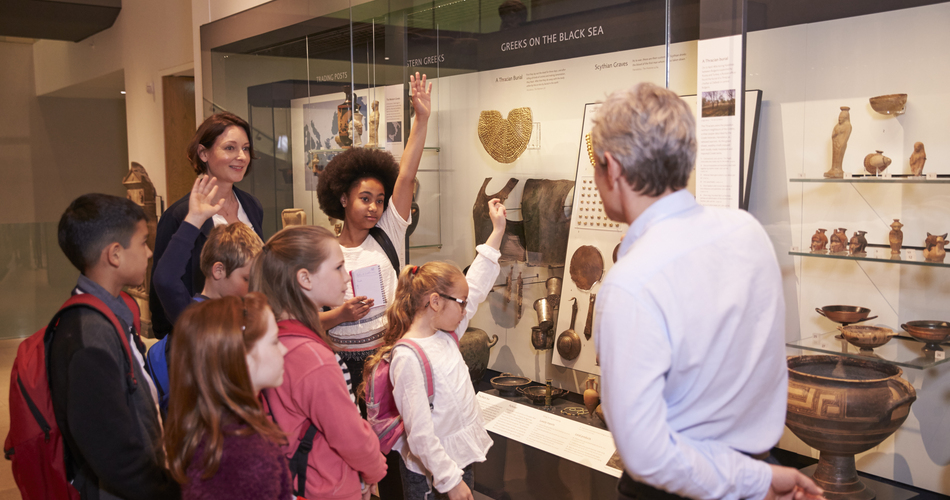
Here’s how to make the most of the field trip experience before, during and after the big day
By Courtney Lind
Educators, parents and students alike can agree: Field trips present invaluable opportunities for students to learn beyond the confines of the classroom. Putting the concepts of physics into practice at a science museum, viewing the events of history through reenactments at some of our country’s famous historical sites, or experiencing the works of the world’s most famous artists at incredible museums… the list goes on, and the possibilities are nearly endless when it comes to field trips.
The success of a field trip largely depends on how well it is planned and integrated into the curriculum. To ensure that field trips are not just fun outings (important as that may be) but also rich educational experiences, we’ve put together some field trip tips to help teachers prepare effectively and make the most out of the experience once students are back in the classroom.
TIPS FOR BEFORE A FIELD TRIP
A little planning can go a long way to making sure that the field trip isn’t a standalone day. We want the learning and experiences to stick with students for years to come.
Do Your Research: Before the trip, provide students with relevant background information about the destination, historical context or scientific concepts. This is your chance to get them excited about their field trip and the time they’ll spend outside the classroom. The more students know about their destination in advance, the more you can leverage that anticipation and turn it into active participation.
Set Clear Learning Objectives: Determine specific learning objectives aligned with the curriculum. What do you want students to take away from the field trip? What concepts have they covered in the classroom that they may encounter while out in the field? Are there any post-field trip activities where you may want to call back to their field trip experience? Clearly outline the knowledge and skills students will ideally gain from the experience and bring this with you on the trip to refer to as needed.
Pre-Trip Activities: Get students excited for their upcoming trip with pre-trip activities. These are designed to pique their interest and activate prior knowledge, while giving a sneak peek into what they can expect during their trip. This can include discussions, worksheets or short assignments related to the upcoming excursion. Be sure to check with your host or venue to see if they offer any pre-trip materials.
Safety and Logistics: Make time to go through important expectations and safety procedures with your students before the day of the trip and remind them again on the day of departure. Knowing critical logistics such as departure times, rules and emergency protocols will put everyone at ease. A well-informed group is more likely to remain focused and engaged throughout the trip.
FIELD TRIP TIPS WHILE TRAVELING
During the field trip itself, teachers play a crucial role in guiding students’ learning and fostering a positive experience. Whether you’re planning a self-guided trip or taking part in a more programmed experience, these tips will keep everyone on track.
Be an Engaging Facilitator: Actively participate in the trip, engaging students in discussions, asking thought-provoking questions and encouraging them to make connections with their prior knowledge. Call on your students’ strengths and guide them to understand links to what they’ve seen in the classroom.
Hands-On Learning: Encourage students to interact directly with exhibits, artifacts and the environment. You’re on a field trip, after all. This engaging style of learning promotes and reinforces key concepts that can then be taken back to the classroom. Students who fully engage their senses are more likely to retain what they’ve learned on the field trip — a win for everyone.
Take Notes and Pictures: Have students take notes or pictures during the trip. These activities can help students stay focused and will serve as useful references when discussing the experience back in the classroom. Have them bring along a favorite notebook or even incorporate a special ‘field trip journal making’ into your pre-trip activities.
Adapt to Unexpected Teachable Moments : Be flexible to seize unexpected teachable moments that may arise during the trip. It’s hard to control every variable when you’re out of the classroom in a new environment, and that’s okay. These spontaneous learning opportunities can be some of the most memorable and impactful for young minds.
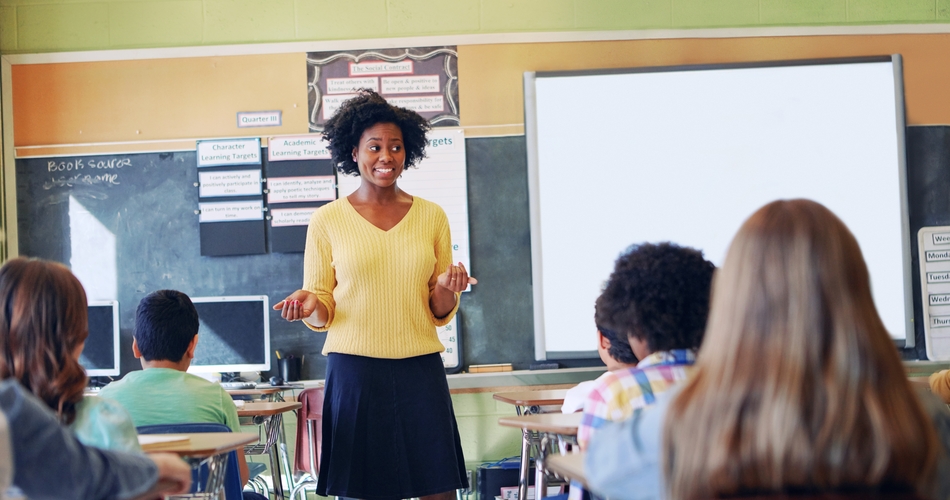
The best field trips start in the classroom with research, goal-setting and pre-trip activities. Photo courtesy Shutterstock images
MAKE THE MOST OF YOUR FIELD TRIP AFTERWARDS
The learning doesn’t end when the buses pull away. After all the hard work you’ve put into planning a field trip, you want to ensure the key concepts and takeaways from the day make their way back to the classroom (along with all the fun and memories).
Group Discussions: After the trip, hold group discussions to encourage students to share their experiences, insights and observations. As we’ve noted before, many field trip venues offer free materials to teachers to help guide discussions based on what students have experienced. Be sure to check if this is available or design your own discussion question to align with your desired learning outcomes.
Assign Reflection Tasks: Reflective writing tasks or projects encourage students to articulate what they learned, how the experience impacted them and how it connects to their studies. This is a great complement to group discussions as it allows everyone to reflect on the field trip in their own way. If you had students utilize notebooks during the field trip, this could be a perfect time to pull those out and continue writing.
Connect With Classroom Learning: Repetition can be a key to success, so try to integrate the field trip experience into subsequent lessons. Draw connections between the trip and the curriculum, reinforcing the new knowledge gained during the outing. Have students recall what they learned or did during the field trip, and how they have seen this at play in the classroom, or vice versa.
Evaluate Learning Outcomes: Assess students’ understanding of the trip’s objectives and the effectiveness of the experience. What reactions did you pick up from students before, during and after the field trip? Were students engaged and able to draw connections between classroom and field trip learning? This evaluation can inform future field trips and educational strategies. Depending on the age group, you can even incorporate feedback into the reflective exercises so that students can provide their thoughts and feelings on the experience.
Field trips can be powerful educational tools when properly planned and thoughtfully integrated into the curriculum. By setting clear objectives, preparing students beforehand, actively participating during the trip and following up with appropriate post-trip activities, teachers can ensure that these experiences leave a lasting impact on their students.
TOP PHOTO: Encourage and facilitate questions during your field trip, allowing enough time for thoughtful answers and thorough discussions. Photo courtesy Shutterstock images
There are still plenty of field trip ideas to read about in Student Travel Planning Guide, along with information for faculty to help plan student travel. Be sure to Subscribe to Student Travel Planning Guide magazine for FREE to learn more.

RECENT STUDENT TRAVEL PLANNING GUIDE ARTICLES

- Skip to main content
Join All-Access Reading…Doors Are Open! Click Here
- All-Access Login
- Freebie Library
- Search this website
Teaching with Jennifer Findley
Upper Elementary Teaching Blog
Field Trip Activities {Free Field Trip Resources}
I have a love/hate relationship with field trips. Some years they are great, and some I just want to sleep for twelve hours after the field trip and never speak of it again (surely I am not the only one, right?).
Field trips can fun and super educational, though. It is nice to take the students out into the “real world,” to expose them to new experiences, and teach them how to be respectful and show manners in a variety of settings. To be honest, I sometimes find it difficult to use a field trip experience to its full potential before and after the field trip (that pacing guide gets me every year). I recently put together some free field trip activities that can be used before and after a field trip and I wanted to share them with you today.
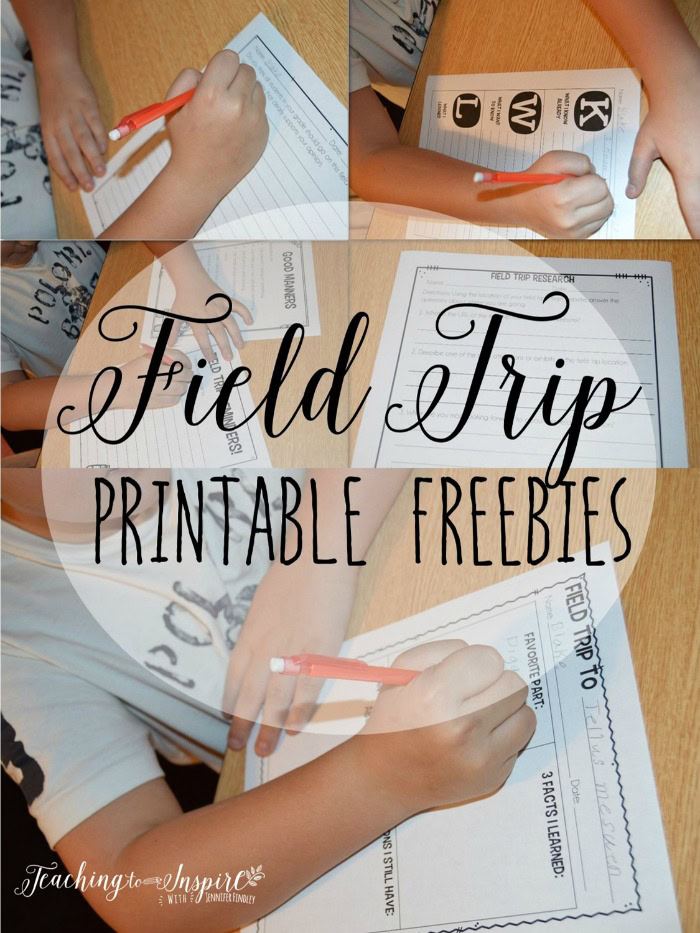
I always like to do a KWL activity about the topic or location of the field trip. A few years ago, we went to a Civil War Battlefield and completed a KWL before the trip. It was a great way to review what we had learned about the Civil War before the trip. The students also brainstormed specific things they wanted to learn about this specific battlefield location. This really helped with the participation during that part of the field trip.

Going over manners and expectation is so important for any field trip. Usually, I find myself giving a quick reminder speech before we get on the bus. However, I think this printable list of things for the students to remember is more efficient than that. Print it out the day before and go over it as a class. Then review it on the day of the field trip.
I also included a Field Trip Reminders printable because I have a hard time remembering to always tell my students to wear comfortable shoes, bring sunscreen, etc. Having this printable helps keep me organized as well.
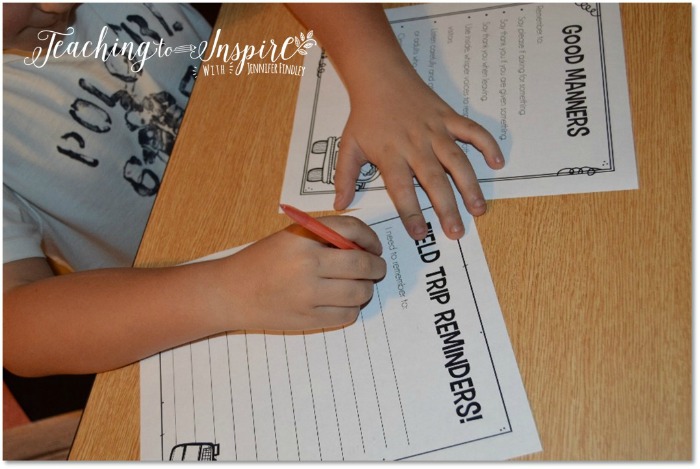
This next field trip activity is perfect if you are going to a location with an updated website. Using this field trip research printable, have your students go on the website and do some research. This gets them excited about the field trip but also gives them knowledge to really get the most out of the trip.
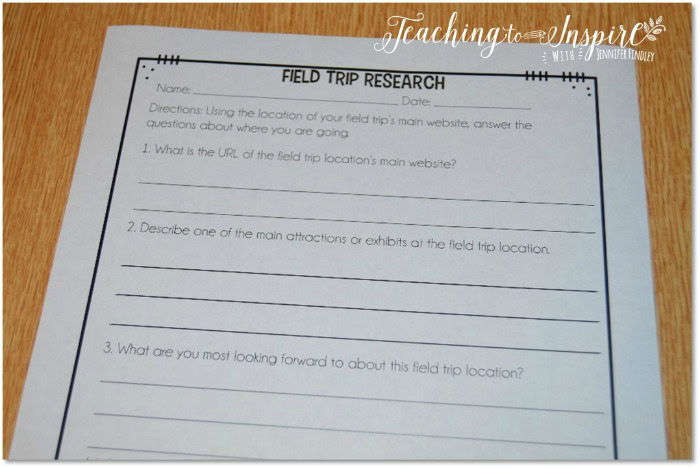
After a field trip is over, I like to have my students take some time to reflect in writing about the trip. In this set of free field trip printables, I included a narrative prompt for them to describe their day and then a persuasive prompt for them to write about their opinion of the trip.
I also give my students some guidelines with this prompt, such as you must include 3 facts you learned about the topic, or you must describe 2 learning experiences you had. This keeps them from writing only about the “fun” part of the field trips, such as hanging out with their friends on the bus or eating at a park.
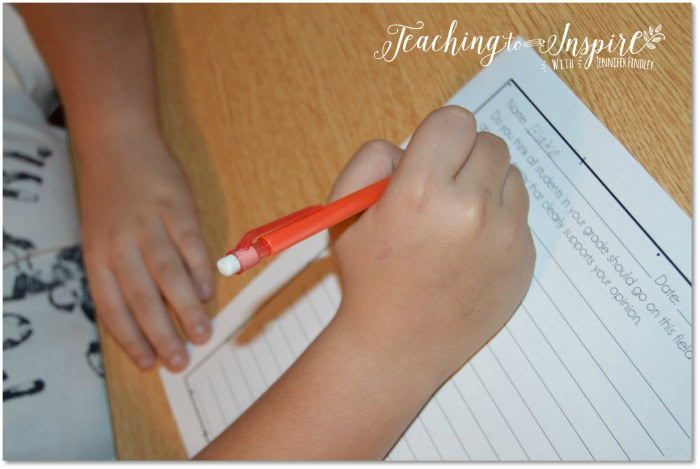
This is another pretty simple printable, but it gets the students reflecting on the trip and what they learned. This type of printable is perfect for homework the day of a field trip or to fill that 30 minutes to an hour you have left in the day if you took an almost all day trip. In fact, all these printable could probably fill up a day before and an after a field trip to really maximize on the learning that happened on the trip.
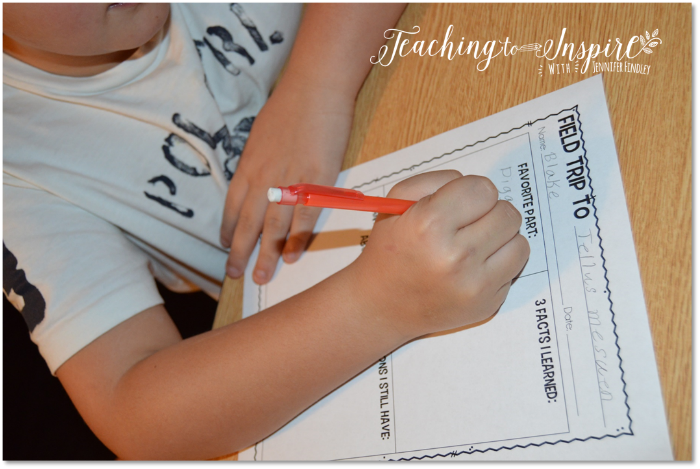
In addition to the printables shown, there is also a tri-fold printable and some templates for a class ABC book that could be completed after a field trip. Click on the image below to download these resources.

I hope these free field trip activities help you and your students get the most out of your field trips. Do you have any go-to activities you do before or after field trips? Let me know in the comments!

Share the Knowledge!
Reader interactions.
January 13, 2016 at 9:39 am
These are great printable for student field trip preparation! If you ever need field ideas for field trips in Georgia, check out http://www.classtrips.com/region-landing/2717/school-field-trips-in-georgia
January 13, 2016 at 12:25 pm
This is a great list, Dana! Thanks for sharing!
January 13, 2016 at 11:37 am
Awesome! This is one of those “why didn’t I think of that” moments. 🙂 Love it! Thanks for sharing!
January 13, 2016 at 2:26 pm
You are very welcome! I have those moments all the time!
January 16, 2016 at 8:42 am
This is perfect!! Thank you so much!
January 17, 2016 at 12:48 pm
You’re welcome! Thanks for stopping by!
February 1, 2017 at 11:25 pm
Hey there, Jennifer I loved this post on field trips. I usually get so caught up with planning the other logistics, I often forget or forfeit these helpful worksheets. And I have to say, I love your site, it’s very similar to mine since we both went with the Modern Blogger Pro design. How did you get yours so pretty?! It’s very nice. 🙂
September 11, 2020 at 7:11 am
Could you add some more detail? This is a very eloquent post nonetheless, so namaste!
https://besvelte.ru/user/JudsonRuggles94/
Leave a Comment Cancel reply
Your email address will not be published. Required fields are marked *
Notify me of follow-up comments by email.
Notify me of new posts by email.
You may also love these freebies!
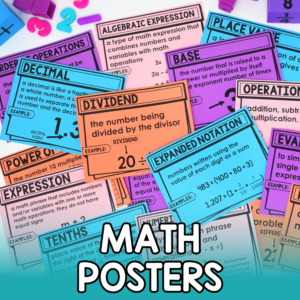
Math Posters
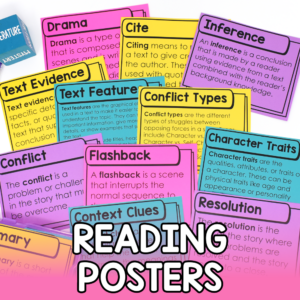
Reading Posters
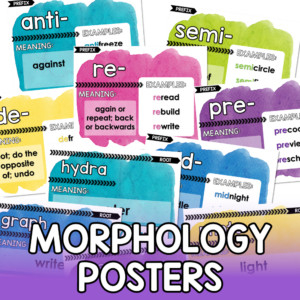
Morphology Posters
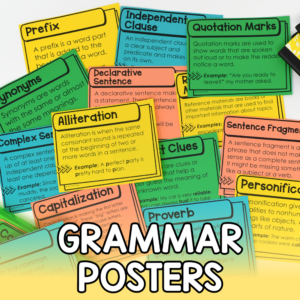
Grammar Posters

Welcome Friends!
I’m Jennifer Findley: a teacher, mother, and avid reader. I believe that with the right resources, mindset, and strategies, all students can achieve at high levels and learn to love learning. My goal is to provide resources and strategies to inspire you and help make this belief a reality for your students.
Search form
- About Faculty Development and Support
- Programs and Funding Opportunities
Consultations, Observations, and Services
- Strategic Resources & Digital Publications
- Canvas @ Yale Support
- Learning Environments @ Yale
- Teaching Workshops
- Teaching Consultations and Classroom Observations
- Teaching Programs
- Spring Teaching Forum
- Written and Oral Communication Workshops and Panels
- Writing Resources & Tutorials
- About the Graduate Writing Laboratory
- Writing and Public Speaking Consultations
- Writing Workshops and Panels
- Writing Peer-Review Groups
- Writing Retreats and All Writes
- Online Writing Resources for Graduate Students
- About Teaching Development for Graduate and Professional School Students
- Teaching Programs and Grants
- Teaching Forums
- Resources for Graduate Student Teachers
- About Undergraduate Writing and Tutoring
- Academic Strategies Program
- The Writing Center
- STEM Tutoring & Programs
- Humanities & Social Sciences
- Center for Language Study
- Online Course Catalog
- Antiracist Pedagogy
- NECQL 2019: NorthEast Consortium for Quantitative Literacy XXII Meeting
- STEMinar Series
- Teaching in Context: Troubling Times
- Helmsley Postdoctoral Teaching Scholars
- Pedagogical Partners
- Instructional Materials
- Evaluation & Research
- STEM Education Job Opportunities
- Yale Connect
- Online Education Legal Statements
You are here
Experiential learning & field trips at yale.
Experiential learning is a holistic learning model based on an integrative process where students first obtain knowledge, then perform an activity (generally with some “real-world” application), and finally reflect on the experience (Kolb 1984), often iteratively. Whereas study abroad programming has reduced its scope across American universities in recent years, studies show that greater depth, breadth, and progressive iteration prove especially fruitful for student learning and skills growth (Coker, et. al, 2017).
“Experiential” can refer to any learning where instructors guide students to apply conceptual knowledge in actual problems or situations. Classic scenarios include activities and experiences held outside of class and/or off campus: service learning in order to better understand the course content or the methods of the discipline; fieldwork conducting research or practice at an off-campus site in direct contact with the entities or phenomena being studied; community-based research in cooperation with local nonprofits to conduct studies to meet the needs of a particular community; and clinical learning. But, it also includes more conventional active learning techniques used in the classroom, such as problem solving, simulations, case studies, peer-to-peer teaching, and material study. Coker, et. al. (2017) also include internships and leadership, given their real world pressures and cycle of experience, reflection, and action.
Field Trips
When constructed to include reflection, conceptualization, and activity, field trips can provide incredibly formative and impactful educational experiences for students. Yale professors typically plan field trips in three main forms:
- on-campus class outings, e.g. a visit to Yale University Art Gallery , Center for British Art , Beinecke Rare Book and Manuscript Library, Peabody Museum of Natural History , the Babylonian Collection , or a walk around New Haven
- optional off-campus activities, e.g. trip to New York City or Boston (both about 2-hour drives)
- required off-campus outings (including semi-optional but formally class-organized trips, such as Spring Break trips abroad led by the instructor)
The third category is strictly regulated by Yale College’s guidelines governing field trips: the Yale College Dean’s office defines an “academic field trip” as a “course-related activity that serves educational purposes and occurs outside of the classroom at a location other than on the campus at which the course is regularly taught.” In addition, if a course is regularly taught outside of a classroom or at locations away from campus (as in the case of fieldwork courses), these same recommended guidelines apply. Instructors planning academic field trips along the terms of the third category should contact Dean George Levesque, 203-432-2920.
Experiential learning in the form of field trips is not only pedagogically promising—it is also very popular among students. There is a general Yale student consensus that funded field trips make classes more attractive, and Yale administrators suggest considering October and Spring Break for class field trips. Numerous classes have boosted their enrollment numbers by optioning an international field trip, while others boost student motivation by reserving trip applications to students with an A average.
Other experiential learning opportunities include:
- A STEM undergraduate student conducts laboratory research for course credit.
- A geology class takes a field trip to Costa Rica to study volcanic processes.
- A foreign language class includes a home-stay component and required participation in other cultural activities.
- A political science class includes a research assignment requiring students to interview the city’s local aldermen.
- A refugee law class visits a refugee legal aid clinic, and students design projects to help meet the needs of the non-profit organization.
For more examples of field trips and other experiential learning activities, instructors can peruse Harvard’s “ Activity Database ,” a compendium of activity-based learning activities recently conducted in undergraduate courses.
Recommendations
- Follow Policy - Instructors should review Yale College’s Academic Field Trip Policies .
- Register - Instructors should review Yale’s International Toolkit and register your trip even if domestic (so that Yale can provide aid in the event of an emergency in a particular city).
- Scale Up - First time field-trip instructors might start with simple outings which fall under the first two categories discussed above. Instructors may also ask their departments for examples of successful field trips led by colleagues.
- Scale Down - Instructors should make any costs associated with these outings clear at the start of the course, verbally and in writing in the syllabus. They may also work to minimize costs to students, and avoid revising or changing costs, unless to reduce, wherever possible.
- Ask for Funding - Because funding for field trips is hard to come by (there is no central Yale funding for field trips), departments are the best sources of funding. Additionally, the CTL’s Faculty Teaching Initiatives offers $500 Instructional Enhancement Funds on a first come -first serve, competitive application basis. Funding for the program is replenished annually, at the beginning of the fall term.
- Consider Transport - Public transportation is encouraged, and transportation must meet Yale’s field trip transportation guidelines . For private transportation outside of Yale, Yale Transportation often recommends Dattco for instructors wishing to book vans, shuttles, and coach buses.
- Accessibility Awareness - Instructors considering travel or experiences including bodily interaction should be aware of student accessibility concerns, and provide dynamic policies to support students with travel restrictions and mobility disability.
Coker, J., Heiser, E., Taylor, L., & Book, C. (2017). Impacts of Experiential Learning Depth and Breadth on Student Outcomes. Journal of Experiential Education 40.1: 5-23.
Kolb, D. A. (1984). Experiential learning: Experience as the source of learning and development. Englewood Cliffs, NJ: Prentice-Hall.
Moore, D. T. (2010). Forms and issues in experiential learning. In D. M. Qualters (Ed.) New Directions for Teaching and Learning (pp. 3-13). New York City, NY: Wiley.
Wurdinger, D. D., & Carlson, J. A. (2010). Teaching for experiential learning: Five approaches that work. Lanham, MD: Rowman & Littlefield Education.
YOU MAY BE INTERESTED IN

Instructional Enhancement Fund
The Instructional Enhancement Fund (IEF) awards grants of up to $500 to support the timely integration of new learning activities into an existing undergraduate or graduate course. All Yale instructors of record, including tenured and tenure-track faculty, clinical instructional faculty, lecturers, lectors, and part-time acting instructors (PTAIs), are eligible to apply. Award decisions are typically provided within two weeks to help instructors implement ideas for the current semester.

Reserve a Room
The Poorvu Center for Teaching and Learning partners with departments and groups on-campus throughout the year to share its space. Please review the reservation form and submit a request.

The Poorvu Center for Teaching and Learning routinely supports members of the Yale community with individual instructional consultations and classroom observations.

Study trips and experiential learning: from preparation to post-trip reflection
Rebecca Wang outlines the key steps to take before, during and after a successful international field trip
Rebecca Wang
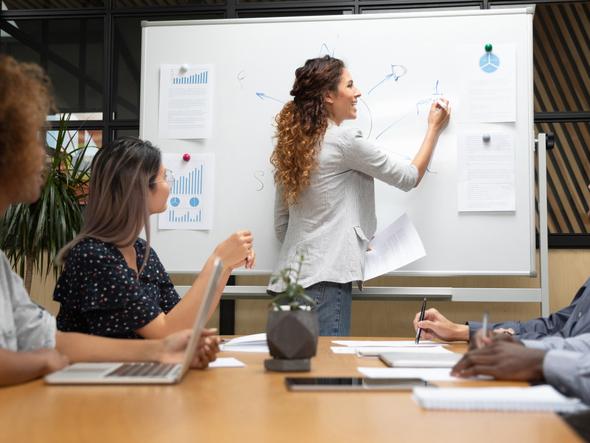
Created in partnership with

You may also like
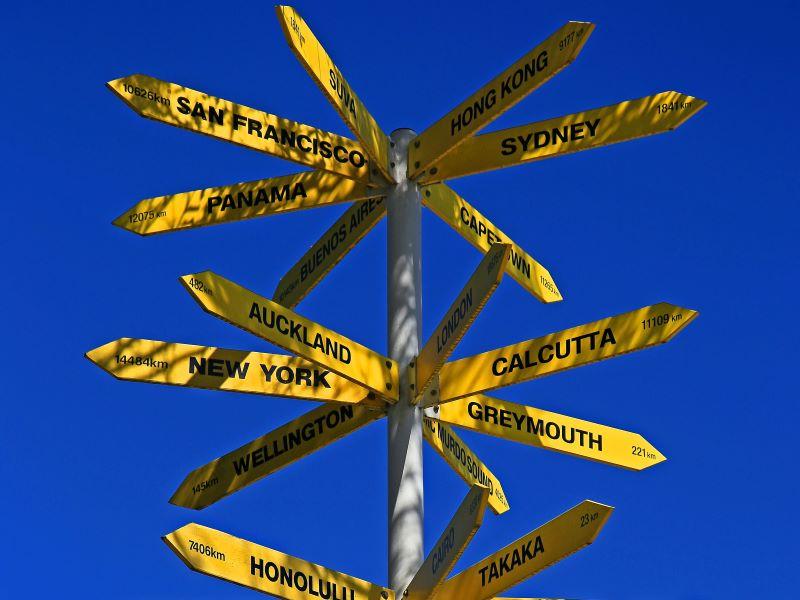
Popular resources
.css-1txxx8u{overflow:hidden;max-height:81px;text-indent:0px;} The secrets to success as a provost
Using non verbal cues to build rapport with students, emotionally challenging research and researcher well-being, augmenting the doctoral thesis in preparation for a viva, how hard can it be testing ai detection tools.
At the heart of our master’s course in international business and management are what we term the “six Cs”. We support our students in developing:
- cross-cultural competence
- collaboration
- communication
- critical thinking
- compassion.
To foster the six Cs, we place emphasis on integrating students from diverse cultural and educational backgrounds and encourage them to develop these competencies through experiential learning. To achieve this, we organise international and domestic study trips. A key feature of these trips is linking a genuine business challenge with a specific module’s authentic assessment. The tasks require students to work within multicultural teams and apply their knowledge to real-world challenges.
I will use a field trip to Tashkent, in Uzbekistan, to illustrate how best to prepare and engage students with authentic business assignments overseas. The task was to answer the question: “What would be the predicted proportion of online and offline shopping, specifically in the grocery sector, in retailing businesses in Uzbekistan in five years, 10 years etc, based on the experience of developed countries such as the UK, the US and Japan?”
This is what we learned:
Promote the aims of the trip early
To support students in understanding the learning outcomes and objectives of the study trip, start your promotion as early as possible – ideally when students enrol on the course. Provide a briefing focusing on the aims and desired learning outcomes of the field trip, as well as outlining the nature of the business challenge they will be handling. It is worth familiarising students with travel procedures for the intended destination, so they know what to expect.
- How to make campuses and courses more compassionate
- Guiding learning by activating students’ inner feedback
- Creating equitable research partnerships across continents
Establish industry partners
Establish partnerships with local businesses or organisations that are willing to jointly set up authentic business challenges that students can work on in a professional consulting manner to enhance their learning. A partner university in situ is likely to have an extensive network of local business contacts.
With the support of our partner university, Westminster International University in Tashkent (WIUT), we were connected with an industry partner in a relevant sector.
The three main criteria for choosing a business partner were:
- The authentic business challenge should have impact on the local economic development .
- It should be a win-win situation for students and the partner organisation.
- The study trip should play a crucial role in enhancing transnational education and cooperation.
How to prepare for a study trip
- Team building: Guide students to self-select teams that are balanced in terms of numbers and nationalities. To support students in developing teamwork skills, assign pre-study trip activities. For example, we asked our student teams to find reports, journal articles and news about Uzbekistan’s economic and business environment in the relevant sectors, and to research the client company.
- Knowledge-input workshop: Organise a workshop or training sessions to help students develop the knowledge and skills they will need during the field trip. For our students, these skills included designing surveys, interviewing, analysing data and presenting. Ensure that any fieldwork or real-world challenge is related to the contents of your core module.
- Consultancy and research skills workshop: Invite industry professionals to deliver intensive skills workshops that equip students with relevant professional skills. In our case, an international business consultant was invited to train students in workplace skills, such as consultancy principles, consultancy style, professional behaviour and communication, and key tools for planning and executing a consultancy assignment.
If you partner with a local institution ahead of a study trip, involve their staff and students in working with your students on the project, as we did with WIUT. Each team should be given significant free rein in how they direct their projects, such as choosing methods for collecting data. But make sure their lecturers or tutors are on hand to check their progress and provide guidance when needed.
It’s important to keep the focus and pace throughout the trip. Students’ progress was moderated and checked through daily briefings and summary meetings. Our students had two days for data collection, analysis and presentation preparation. On the fourth day, students presented their findings to a panel that included the CEO of the client company, WIUT lecturers and students.
Post-study-trip phase
Ask each team to produce a reflective diary, in which they consider and feed back on the study trip process, what went well, what they achieved and learned and how they could do it better next time. Students’ feedback and our own reflections on everything from preparation workshops to post-trip reflection helped refine the second study trip.
Four key pieces of advice for organising a successful study trip
Get management and administrative support.
From planning, organising and coordinating to implementing the trip, seek support from other teams within the university, drawing on your institution’s expertise and resources. Find others to help with travel itineraries, transport and accommodation so you have the time to teach, liaise with partner companies and plan workshops and learning activities.
Engage and support students with targeted workshops
Workshops helped equip students with knowledge of the specific subject area, as well as hard and soft skills. Ask students to consider how to resolve practical difficulties they may come across in an unfamiliar country, such as language barriers and cultural differences. Lecturers met regularly with each team to monitor students’ progress throughout the project. This helped identify teams or students in need of support or a nudge.
Collaborate with a partner institution
The course team benefited from our partner institution when organising study trips to Tashkent. Through its contacts, we sourced the companies that participated. Our partner institution helped us find local students who volunteered to be interviewed, and who acted as interpreters when our students interviewed local people.
Build in a self-reflection activity
After the trip, as a round-up exercise, we asked students to apply Gibbs’ reflective cycle to think about what they had learned, and how to further their competencies and learn from intercultural dialogues, both in and out of the classroom. The study trip provided meaningful opportunities for students to develop their six Cs.
By arranging the field trip in the first semester of the course, we helped students build strong foundations in these six key competencies, as well as aiding strong course bonding. The success of the study trip reflects the collective efforts of a wide range of faculty at the University of Westminster and WIUT and the commitment and enthusiasm of a diverse group of students.
Rebecca Wang is principal lecturer in international business and management at Westminster Business School .
If you would like advice and insight from academics and university staff delivered direct to your inbox each week, sign up for the Campus newsletter .
The secrets to success as a provost
Emotions and learning: what role do emotions play in how and why students learn, the podcast: bringing an outsider’s eye to primary sources, a diy guide to starting your own journal, formative, summative or diagnostic assessment a guide, harnessing the power of data to drive student success.
Register for free
and unlock a host of features on the THE site
- Our Mission
Using Inquiry to Create Inspiring Field Trips
When students approach a field trip with the goal of answering their own questions, they get to be in charge of what they learn.
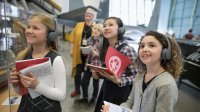
Field trips’ academic and social benefits are well-researched, but these events require thoughtful planning to maximize potential learning in a new and unfamiliar environment. Inquiry-based engagement offers educators a simple, versatile approach to place-based learning that they can adapt to fit any age group or content area. Educators know that lengthy and frequent interactions with physical and social features of an environment can stimulate more productive discussions about its content, leading to meaningful learning and deep connections to that location.
Inquiry techniques like those described below encourage students to pay close attention to their surroundings as they employ scientific thinking to decipher what their observations tell them about their new learning environment and its significance.
Ask Questions and Make Observations
Inquiry begins when students engage with their learning environment. Young learners can become overwhelmed when visiting new places; as the facilitator, you can provide academic, social, and cultural context to help them understand what aspects of the field trip destination they should focus on. Before your excursion, ignite the class’s curiosity by taking a first look at the location’s website or online resources together.
Students in fourth through eighth grades and high school may be able to conduct brief independent research about the location to share with their peers. Model inquiry for your students by asking open-ended questions: “What service does this place provide to the community? What community events are coming up? What public figures are associated with this location?”
As the facilitator of inquiry, you’ll decide the purpose of your field trip: to make observations that inspire further questions or to collect data related to existing investigations. These goals will require a detailed record of what the participants saw and experienced during the field trip. Students might keep a simple journal to write, draw, or diagram different things they observe; encourage them to express their thoughts creatively through various media. Another option for recordkeeping could be to incorporate technology and adult engagement. You could ask chaperones to take pictures and videos at the students’ direction as their groups explore.
Allow students time to linger on things that spark their curiosity without the pressure of an itinerary or final grade. It’s tempting to push groups to see everything they can before leaving the location, but remember: Long and frequent interactions with different exhibits or features are more likely to inspire productive discussions later on. Thirty seconds may seem like a low bar for engagement, but any element that can hold a child’s attention for that long has the potential to spark new ideas later on.
Uncover Comparative Questions and Explore Predictions
Questioning is at the heart of inquiry-based learning, but the ultimate objective is identifying questions that lead to critical and complex thinking. This investigation step can occur before departing your field trip location, when you return to the classroom, or even the next day—just don’t miss your chance to capture your students’ enthusiasm and curiosity about the trip.
Encourage students to share their observations and experiences and to look closer at the details they recorded: physical characteristics, spatial arrangements, and sensory qualities. In this step, a KWL (Know, Wonder, Learn) chart can be a helpful tool as students track their connections between the field trip and other personal experiences. Work together to find similarities and differences in the class’s observations.
After reexamining the experience, it’s time for your students to generate some questions that they can investigate further. These investigations may relate to the location, the community it serves, or a topic based on their observations. The key is to let the students generate the questions—this engages them in making meaningful connections to something they deem impactful.
As your learners brainstorm, work with them to rephrase closed-ended questions into new, more complex queries. Ask them to consider the following as they work: “How can this question add to our understanding of the world and how it operates?” and “Who might find this question especially interesting?” Uncovering questions that lead to a critical examination of preconceptions and thinking patterns is a skill that takes time and practice to develop.
When you determine the purpose of your field trip, you also set expectations for how your students can independently and collaboratively work on their research. Take time for the group to plan and test the action steps of their research in small groups or as a whole class. Your investigators need space to process their successes and struggles as they try new investigative methods.
Reflect on Findings and Share Discoveries
For lasting and impactful learning, inquiry about place-based experiences should extend past the initial excitement of getting out of school to travel somewhere. Reflection is vital to inquiry because it allows the learner to identify effective strategies for future learning. Whether the final reflection product is an informal presentation, a written report, an interpretive art piece, or a public exhibition, it’s important for students to share what they’ve learned with others.
Consider what venues and approaches will allow your learners to reach the widest audience of peers, parents, guardians, and community members outside the classroom. Encourage students to share their experiences through quantitative and qualitative methods, and help them identify the parts of their investigations that are the most important or meaningful.
You don’t need to use every aspect of inquiry-based learning to nurture your students’ attachment to field trip destinations. Incorporating any of these strategies can help connect them to new places through combined experiential learning and collaborative interpretation of shared experiences. Inquiry-based learning empowers students to become creators of knowledge by using their experiences to inspire their explorations of the world around them.
Classroom Q&A
With larry ferlazzo.
In this EdWeek blog, an experiment in knowledge-gathering, Ferlazzo will address readers’ questions on classroom management, ELL instruction, lesson planning, and other issues facing teachers. Send your questions to [email protected]. Read more from this blog.
Response: Leveraging Field Trips to ‘Deepen Learning’

- Share article
(This post is Part Two in a three-part series. You can see Part One here .)
The new “question-of-the-week” is:
How can teachers maximize the learning potential of field trips?
In Part One , Jennifer Orr, Herb Broda, Anne Jenks, Russel Tarr and Andrew Miller shared their answers to this question. You can listen to a ten-minute conversation I had with Jennifer, Herb and Anne on my BAM! Radio Show . You can also find a list of, and links to, previous shows here .
Today, Ron Berger, Camille A. Farrington, Gail Desler, Abby Schneiderjohn, and Mike Janatovich contribute their thoughts.
Response From Ron Berger
Ron Berger, a teacher for more than 25 years, is chief academic officer for EL Education and an author of several books including Learning That Lasts and Leaders of Their Own Learning :
When I was a kid I loved field trips. The promise of a day of adventure in the “real world"—not another day sitting at our desks — was as close as I was going to get to Disneyland. It hardly mattered where we were going and what we were doing: the possibility was exciting. The fact that these field trips were not leveraged to deepen our learning (in fact, they were often disconnected entirely from our studies) was not something that even occurred to me.
In second grade we visited a dairy farm. A real farm! We were not studying farms or cows, but there had been a story in our reading textbook about a dairy farm, and evidently this trip was a yearly tradition. We weren’t complaining. When our school bus arrived in front of a real red barn, we clambered down and boarded a miniature train with tiny, kid-sized seats and no roof, and we cheered as the train chugged its way past smelly pigpens and pastures of cows. It was only as an adult that I looked back and questioned this: a train on a dairy farm? (I guess hosting tours supplemented the small farm’s income). What we remembered most was the chocolate milk we got to drink at the end of the tour--from glass bottles!
Fieldwork instead of Field Trips
At EL Education we use the term fieldwork , rather than field trips. This is not just a semantic difference. Fieldwork is not sitting on a miniature train looking at sites, and it’s not just taking a tour of an historic home or walking through an aquarium. Fieldwork is what adult professionals do: research in the world. It may happen to take place in an historic home or an aquarium, but the students are not there as passive listeners. They are there to conduct research for their studies: taking notes, taking photos, interviewing experts.
An EL Education middle school in Cooperstown, New York, did their fieldwork on local dairy farms. It was very different from my second-grade field trip. As part of a year-long science/humanities learning expedition on agriculture, students studied the fundamental change in their community as the local economy shifted away from centuries of farming toward the tourist industry. They met and interviewed the local dairy farmers and worked in teams to visit their farms and learn in detail about their history and their current areas of success and challenge, from a farming perspective and business perspective.
The students created a book to share with the community to honor the farms and families that were the historical foundation of the local economy. They did scientific research on the farms to create a guide to the vertebrates and invertebrates that shared the farm ecosystems with the domestic animals. (The teacher leader of this expedition, Amy Parr, was chosen as New York State’s Agriculture in the Classroom Teacher of the Year for 2013). For students, this was a transformational educational experience.

What makes this type of fieldwork different from traditional field trips?
Students travel to places that are integral to what they are studying . The travel is not seen as a break or a reward but an opportunity for important learning.
Students have an important purpose — a mission — for every trip. They are collecting information to create something of quality and value to share with others.
Students are deeply prepared ahead of time with expertise in what they will be seeing and whom they will be meeting. They arrive excited to see in real life the things and people that they have learned about.
Students are actively engaged on site in interviewing experts and collecting information : taking notes, photos, videos, sample measurements. They are scientists and historians, not passive visitors. They are trained and prepared to collect information politely, effectively and wisely.
- Students return to the classroom with a charge to use their data and the learning to create something meaningful. The fieldwork experience does not end when the bus returns to school: the class reflects on what they learned, how they behaved and worked together, and how they will make good use of the fieldwork in their work.
Going Deeper
A memorable example for me of the power of fieldwork was when it transformed a class of first graders at the Mary O. Pottenger Elementary School in Springfield, Massachusetts. The teacher, Chris Scibelli, was a talented veteran teacher who had a tradition of bringing her students on a field trip to Sturbridge Village as a part of a study of Colonial America. Sturbridge Village is a restored colonial village where craftspeople of all types demonstrate colonial trades as characters in period costume. Chris’s students always loved seeing blacksmiths, weavers and coopers in their workshops.
When Pottenger first joined the EL Education network, Chris was understandably skeptical about changing her practices. She was already a very successful teacher, and her routines and practices worked fine. She kept her skeptical eye but was willing to give this new approach a shot. With EL support, she redesigned her colonial study into a more full learning expedition which would culminate in her first graders creating a picture book for kindergartners: a “Then and Now Book of Colonial Life.” The book would have writing and student drawings to teach younger students about how daily life was different during colonial times.
That year her students took the usual trip to Sturbridge Village, and students were excited as always to meet the actors/craftspeople. This year, however, they had a different mission: they each had to choose a colonial craft or trade about which they would become an expert. One week later, the class returned to Sturbridge Village for a second trip, and this trip was entirely different: small groups of students, with a parent or teacher helper, spent the entire visit in one workshop, learning from one craftsperson, interviewing, taking notes (adults helped with note-taking), photographs, and samples as that craftsperson worked with visitors.
I visited the classroom when students were working intently on their book and was amazed by their knowledge. Every first grader knew more about a colonial trade or craft than I did. They were bursting with knowledge to explain, stories to tell, photos to share. They were truly little experts. While the unit on Colonial America had been successful in the past, this year it was a wholly different level of success. This was the power of fieldwork.
You can see what fieldwork looks like in a diverse urban school, King Middle School in Portland, Maine, in this video .
Fieldwork and Experts: The Branching Out Expedition at King Middle School from EL Education on Vimeo .
Response From Camille A. Farrington
Camille A. Farrington is a Senior Research Associate and Managing Director at the University of Chicago Consortium on School Research, where she studies how schools contribute to human development. Before earning her Ph.D. and becoming a member of the Mindset Scholars Network , she was a high school teacher for 15 years. She still loves going on field trips!
You became a teacher because you want to make a positive difference in your students’ lives, right? Well, field trips are wonderful opportunities to provide students with critical developmental experiences that have lasting impact, so design them for that purpose!
Last year, my colleagues and I at the University of Chicago Consortium on School Research scoured the literature and interviewed experts in neuroscience, education, and psychology to understand how young people develop the factors that matter most for life and work success. In Foundations for Young Adult Success: A Developmental Framework , we describe five ACTION experiences and five REFLECTION experiences that are as important for kindergarteners as they are for high school students. All are important to keep in mind as you design out-of-school adventures for your class.
The next time you take your students on a field trip, make sure you build in rich opportunities to: encounter new places, concepts, people, roles, and perspectives; tinker with things or ideas in a low-stress environment; practice behaviors or skills to build expertise and confidence; choose among options for how to engage or what to learn; and contribute to something they value.
These five ACTION experiences provide awesome opportunities for growth and development, but by themselves they aren’t enough. Students might run around a science museum pushing buttons or crowd around an incubator watching baby chicks hatch, but then leave without having really learned anything. That’s because, as John Dewey reminded us, “We don’t learn from experience, we learn from reflecting on experience.”
To maximize the potential of field trips, intersperse action experiences with REFLECTION experiences. As much as they need to engage in doing, students also need opportunities to: describe their observations; evaluate strategies, behaviors, or solutions; connect their experience to other things they know or care about; envision how their experiences or discoveries might be helpful in the future or might apply in another context; and integrate what they’ve learned or done into the kind of person they might want to be.
Last spring I accompanied a group of high school students on a two-hour field trip, organized by Embarc Chicago , to a small business that sells fresh salads through vending machines . The students were greeted by employees who told them the salad company was debating whether to locate vending machines in Garfield Park, a low-income Chicago neighborhood. They asked students to help them conduct some research—and then distributed colored pencils, maps of Garfield Park, and lists of all the grocery stores, liquor stores, restaurants, and fast food places in the neighborhood. Students worked in small groups, marking the location of each business on their maps, then comparing Garfield Park to a map of the affluent Lincoln Park neighborhood with food places already colored in. Students then debated whether or not Garfield Park could be considered a “food desert,” using a definition provided by their teacher.
Next, the class broke into groups and rotated through opportunities to: interview company owners about their backgrounds and business plans; compete in pairs to see who could use a diagram to stock the vending machines most quickly, and then evaluate the strategies each team used; and to create and name their own salads, choosing from some 40 different ingredients. To close the visit, students ate their salads and reflected on what they learned—how it connected to other trips they had taken or other things they were studying. I was impressed that Embarc organizers included all 10 developmental experiences in two short hours!
Powerful field trips provide young people with opportunities to engage in meaningful activities and to make sense of those experiences—to actively build their story of how the world works and how they fit into it. Next time you bring your students into the field, use the developmental experiences framework as your planning guide!

Response From Gail Desler
Gail Desler is a technology integration specialist for the Elk Grove Unified School District in Elk Grove, Calif. She also serves on the advisory committee for the California K12 High Speed Network (K12HSN), a state program funded by the California Department of Education for the purpose of providing educators, students and staff across the state with access to the high speed network needed to videoconference. Beyond the school day, she co-curates the Digital ID Project , a global microphone for students to speak out on digital citizenship issues:
Whether it’s in preparation for, or as a follow-up to, or instead of a real-time field trip, videoconferencing is an amazing digital tool for maximizing the learning potential of field trips. I’ve been tapping into the power of videoconferencing for over 10 years, connecting students with authors, poets, soils engineers, astronauts, park rangers, other classrooms, and more. Yet for as unlimited as the possibilities for videoconferencing are, it is surprising how few educators are taking advantage of this technology.
Eleven years ago, I rented a district van and drove a group of students from a continuation high school over to California State University, Sacramento, so they could virtually meet with students from a continuation high near Santa Barbara. These two groups had already been blogging on the topic of a banned book: Luis Rodriguez ‘ “Always Running, Gang Days in East L.A.” Minutes into the videoconference, Luis Rodriguez joined us from somewhere in Los Angeles. Weeks later, the students were still discussing and blogging about—when they didn’t have to—the virtual field trip, an experience that, given the distances, would not have been possible in real time.
Soon after the CSU Sacramento/UC Santa Barbara event, renting a bus or van was no longer necessary. By purchasing a Tandberg videoconferencing camera, I was able to bring videoconferencing directly into the classroom. Taking students on virtual field trips to California’s State Parks via the Parks Online Resources for Teachers and Students (PORTS) , for instance, has increasingly become an integral part of the school day. As you can see from this videoconference on the life cycle of monarch butterflies or this videoconference to a California Gold Rush town , it’s a two-way flow of information, with students learning from the park rangers, but also becoming active researchers and investigators as they share their understandings and growing expertise on the topic.
Today, a (pricey) videoconferencing camera is a thing of the past. Using any device with a webcam, teachers and students can take virtual field trips with free programs such as Skype or Google Hangouts. A visit to NASA , PORTS , National Parks , Skype , or CILC will provide you with a glimpse into the many ways to prepare for, create, or extend field trip teaching and learning options.
Recently, a tech support person from my department shared that he had started out one very rainy morning at an elementary school site, helping the teacher set up a webcam for a videoconference with NASA. He noticed the level of student engagement and participation, and would have enjoyed staying for the full 40-minute session, but he had to get to another elementary site. He arrived at the next school in time to find four classes waiting in the rain for buses that were apparently delayed. He, of course, felt the need to suggest to the teachers, “You might want to look into taking virtual field trips. No buses, no permission slips, no hassles.”
It is wonderful to have the budget for real-time field trips. However, if we structure virtual field trips in ways that allow students to connect and collaborate with each other, as well as with the experts, then virtual field trips can certainly be the next best option—or sometimes even the better learning option.

Response From Abby Schneiderjohn
Abby Schneiderjohn (@aschneiderjohn) is an elementary school teacher in San Jose, CA. She is beginning her seventh year of teaching and implementing Project Based Learning this year. She is also a Buck Institute for Education National Faculty member:
When some hear the words “field trip,” they probably imagine uncomfortable bus rides, semi-organized chaos, frustrated chaperones, and logistical nightmares. When planned intentionally, a field trip becomes an authentic and rich learning experience for all students, and not just a reason to get out of the classroom for the day.
An engaging entry event is an integral part of planning a Project Based Learning unit. It hooks the learners, sparks curiosity, and launches inquiry. When using a field trip as an entry event, it provides the real life context needed for students to make connections from their work in the classroom to its implications in the real world.
Katherine Smith Elementary School second graders launched their “Kid Inventors” project with a trip to The Tech Museum of Innovation in San Jose, Calif. They participated in a science lab, Physics of Roller Coasters, which had them test different laws of physics using an engineering design process. When students returned to the classroom, their Need to Know questions were rich with vocabulary that they learned during the field trip. The field trip gave them essential background knowledge and language that helped them access the PBL curriculum. Bringing the learning to life is especially important for our English Learners, as it gives students another opportunity to use academic vocabulary in context.
When planning an engaging field trip, there are some additions you can include to increase the rigor of the trip! One addition can be a note taking guide or scavenger hunt. This will help you as the teacher direct your students to look for certain things during the field trip. If possible, use technology such as iPads or tablets to have students take pictures and/or record their experience. You can even make it public by having students blog about the experience afterward!
When you hear the words “field trip” again, I hope you think of the rich, authentic learning experiences they can truly provide for our students!

Response From Mike Janatovich
Mike Janatovich is the assistant principal of Harmon Middle School in Aurora, Ohio, and an ASCD Emerging Leader :
The field trip is, in my opinion, one of the most important learning opportunities that students can experience in school. It is an opportunity for them to become immersed in something that will expand or solidify their learning. Within an educational setting, we must maximize the learning potential by allowing actual learning to take place. An “educational setting” is not just contained to the classroom. An educational setting should and must be all the areas of the world that students can access.
When I am on a field trip, I cringe when I see students carrying a clipboard with a worksheet that they have to complete on a field trip. To me, this is not learning. This can be done from home on a Google search. Wherever you are going, or whatever place you are visiting, we must let kids experience it. If we require every student to do the exact same thing on a field trip, are individual students really “experiencing” it? I fully understand having a focus on a field trip, but after that initial focus, we must let kids explore. Allow kids to think, discover, and experience wherever you might be visiting.
As educators we need to be prepared to recognize that all the intended “standards” might not be covered, but this is OK. If we allow student choice and are excited about something, I can guarantee you that students will learn. It will be up to us as educators to harness it. I once heard an educator say in the Smithsonian American History Museum, “Don’t go into that exhibit, that is a 9th grade standard”. How about let them experience that part of the museum that they find exciting and have them compare it to what they are learning in 8th grade? How about using social medial to allow students to document their experience? These are small things, but critical if we want kids to fully maximize their potential while exploring the world on a field trip.
Most field trips fall short when the field trip ends. Too often, field trips are seen a culmination or a reward at the end of a unit/year. When this happens, we cut the learning short. Upon returning from field trips there must be follow-up conversations. All students to share and discuss what they experience. To deeply cement learning, use the experience to create. Have students contact the designer of the monument, curator of the museum, naturalist at the park, or whoever plays a key role where you visited and have the students questions that were created after they visited. Even try to let this turn into a Skype call or a Google Hangout. Imagine your students experiencing something and then having the opportunity to discuss it on a deep level. Even if they do not respond, the act of formulating questions for a real audience will deeply motivate students.
Keep one question in mind in the entire field trip process (planning, visiting, follow up): Are my students experiencing the field trip? If you make your field trip an experience for students, learning will happen. Standards will be covered, and if they are not, the skills they learned will make students stronger critical thinkers that will allow them to dive deeper into all learning in the future.

Thanks to Ron, Camille, Gail, Abby, and Mike for their contributions!
Please feel free to leave a comment with your reactions to the topic or directly to anything that has been said in this post.
Consider contributing a question to be answered in a future post. You can send one to me at [email protected] .When you send it in, let me know if I can use your real name if it’s selected or if you’d prefer remaining anonymous and have a pseudonym in mind.
You can also contact me on Twitter at @Larryferlazzo .
Anyone whose question is selected for this weekly column can choose one free book from a number of education publishers.
Education Week has published a collection of posts from this blog -- along with new material -- in an ebook form. It’s titled Classroom Management Q&As: Expert Strategies for Teaching .
Just a reminder—you can subscribe and receive updates from this blog via email or RSS Reader. And, if you missed any of the highlights from the first five years of this blog, you can see a categorized list below. They don’t include ones from this current year, but you can find them by clicking on the “answers” category found in the sidebar.
This Year’s Most Popular Q & A Posts!
Classroom Management Advice
Student Motivation & Social Emotional Learning
Implementing The Common Core
Race & Gender Challenges
Best Ways To Begin & End The School Year
Brain-Based Learning
Teaching Social Studies
Project-Based Learning
Using Tech In The Classroom
Parent Engagement In Schools
Teaching English Language Learners
Student Assessment
Reading Instruction
Writing Instruction
Education Policy Issues
Differentiating Instruction
Math Instruction
Science Instruction
Professional Development
Teacher Leadership
Administrator Leadership
Relationships In Schools
Instructional Strategies
Author Interviews
I am also creating a Twitter list including all contributers to this column .
Look for Part Three in a few days...
The opinions expressed in Classroom Q&A With Larry Ferlazzo are strictly those of the author(s) and do not reflect the opinions or endorsement of Editorial Projects in Education, or any of its publications.
Sign Up for EdWeek Update
Username or Email Address
Remember Me
University of Westminster and DEN (Democratic Education Network) initiative.
INSIDE WESTMINSTER
- Student Journeys
- Field Trips
- DEN Publications
- Academic paper
- Write for Us
My reflection on the field trip: a mutual learning experience
Insidewestminsterblog - january 6, 2023 january 7, 2023.
My name is Trinh. I am a third-year student at Hanoi University in Vietnam. It was a great honour for me to have an opportunity to support the students from the University of Westminster when they conducted their field trip in Vietnam. However, before their arrival, I was anxious about how I would help the students as I didn’t know them; this was the first time I had worked with international students. Therefore, I wanted to support them with various aspects of the field trip, especially language, food, culture, education and above all, their shopping.
As English is not my first language and I have never been to the United Kingdom (UK), I believed it would not be easy to develop a meaningful relationship. However, the University of Westminster students were friendly, generous, and sometimes funny, which helped me develop a relationship quickly. It was so good that I wanted to spend much more time with them. They treated me like their own friends. They talked to me a lot to help me feel less shy and more confident.
This trip has brought me many advantages, and I have learnt a lot from my international friends, from their culture, education, and the country they live.
I was impressed by their willingness to learn about Vietnam. For example, they always asked questions about Vietnamese society, politics, and education. In addition, I learnt about their method of conducting themselves in the classroom. For instance, they were shy or anxious to express themselves and ask questions of the teachers.
As I was with the Westminster students all the time during the trip (I stayed in the same accommodation as them), this helped me better understand them as people, as well as the subject they study. A further benefit is that I have improved my speaking of the English language.
This experience will help me with my career development, and I view it as an opportunity that has improved my job prospects after completing my degree.
I will happily jump at any opportunity to pass on the same responsibility. I will use the experience, knowledge, and skills I learned on this field trip to manage the next one.
The trip helped improve my confidence to exchange my own ideas and communicate with others by being less anxious. The trip was an exchange of learning between myself and the students from Westminster.
Finally, the trip will be one of the most memorable parts of my education as I learnt and enjoyed it so much and made many friends. I am fortunate and proud to be part of this trip. I look forward to supporting the international students with the next trip when the opportunity arises.
Trinh Hà Thị Kiều, Hanoi University, Vietnam
Leave a Reply Cancel reply
Your email address will not be published. Required fields are marked *
Save my name, email, and website in this browser for the next time I comment.
Understanding Field Trips in Education
Learn about Field Trip in this educational glossary entry.
In the realm of education, a field trip is a planned excursion away from the classroom to provide students with firsthand experiences that enrich their learning. Field trips are an integral part of the educational process, offering students the opportunity to explore real-world environments, engage with new concepts, and apply classroom learning in practical settings. These outings can take place at a variety of locations, such as museums, historical sites, nature reserves, scientific institutions, and more, depending on the educational objectives of the trip.
Types of Field Trips
Field trips can be categorized into various types based on their focus and purpose. Some common types of field trips include:
- Academic Field Trips: These trips are directly related to the curriculum and are designed to enhance students' understanding of specific subjects. For example, a science class might visit a botanical garden to learn about plant biology.
- Cultural Field Trips: These trips aim to expose students to different cultures, traditions, and historical landmarks. Visits to art galleries, historical monuments, or cultural festivals fall under this category.
- Outdoor Field Trips: Outdoor field trips focus on exploring natural environments such as forests, beaches, or mountains. These trips provide students with opportunities for outdoor learning and environmental education.
- Community Service Field Trips: These trips involve students in volunteer activities or community service projects. Students learn the value of giving back to the community and gain a sense of social responsibility.
Benefits of Field Trips
Field trips offer numerous benefits to students, educators, and the overall learning process. Some of the key advantages of incorporating field trips into the curriculum include:
- Enhanced Learning: Field trips provide students with hands-on experiences that complement classroom instruction and deepen their understanding of academic concepts.
- Increased Engagement: Students are more engaged and motivated when learning in real-world settings, leading to improved retention of information.
- Exposure to Diversity: Field trips expose students to diverse cultures, environments, and perspectives, fostering a broader worldview and cultural awareness.
- Development of Life Skills: Field trips help students develop critical thinking, problem-solving, and social skills through interactive experiences outside the classroom.
- Enriched Curriculum: Field trips enhance the curriculum by providing students with opportunities to apply theoretical knowledge in practical contexts, making learning more meaningful and memorable.
Planning and Preparation
Effective planning and preparation are essential for a successful field trip experience. Educators and organizers must consider several factors when planning a field trip, including:
- Learning Objectives: Clearly define the educational goals and outcomes of the field trip to ensure alignment with the curriculum.
- Destination Selection: Choose a location that is relevant to the subject matter and offers valuable learning opportunities for students.
- Safety Measures: Prioritize student safety by conducting risk assessments, establishing safety protocols, and ensuring adequate supervision during the trip.
- Logistics: Arrange transportation, obtain necessary permissions, and communicate trip details to students, parents, and chaperones in advance.
- Engagement Activities: Plan interactive activities, guided tours, and hands-on experiences to maximize student engagement and learning outcomes.
Post-Trip Reflection
After the field trip, it is important to engage students in reflection activities to reinforce their learning and facilitate deeper understanding. Some post-trip reflection strategies include:
- Discussion Sessions: Encourage students to share their experiences, insights, and observations from the field trip in group discussions or class presentations.
- Journaling: Have students write reflective journals or essays about their field trip experiences, highlighting key learnings and personal reflections.
- Project-Based Assessments: Assign projects or assignments that require students to apply their field trip experiences to demonstrate their understanding of the subject matter.
- Feedback Collection: Gather feedback from students, educators, and chaperones to assess the effectiveness of the field trip and identify areas for improvement.
Field trips play a crucial role in enhancing the educational experience by providing students with opportunities for experiential learning, cultural exploration, and skill development. By venturing outside the classroom and engaging with real-world environments, students can deepen their understanding of academic concepts, broaden their perspectives, and acquire valuable life skills. Educators, parents, and organizers must collaborate to plan, execute, and evaluate field trips effectively to maximize their educational impact and ensure a meaningful learning experience for all participants.
Upgrade Your Account
Unlock exclusive features for you and your students today.
- Full access to all tools — Unlimited use of Quiz Creator , Explain Anything , Brainstorm , Fieldtrips , Storyteller , and Coloring Pages
- Visual understanding — Upload and analyze photos with Subject Explorer
- Upgraded Intelligence — Get even smarter and more relevant analysis
- Multi-student management — Switch between student profiles to streamline tracking and stay organized
- Ad-free environment — Enjoy Learning Corner without advertisements
1 student management and access to all features
$6/month or $60/year (Get 2 months free) €5.52/month or €55.20/year AU$9.06/month or AU$90.60/year £4.74/month or £47.40/year
2 students management and access to all features
$10/month or $100/year (Get 2 months free) €9.20/month or €92.00/year AU$15.10/month or AU$151.00/year £7.90/month or £79.00/year
Up to 5 students management and access to all features
$20/month or $200/year (Get 2 months free) €18.40/month or €184.00/year AU$30.20/month or AU$302.00/year £15.80/month or £158.00/year
Unlimited student management and access to all features
$30/month or $300/year (Get 2 months free) €27.60/month or €276.00/year AU$45.30/month or AU$453.00/year £23.70/month or £237.00/year
Got a feature request or is something not working? Let us know here or comment on Facebook .
- Skip to main content
- Skip to primary sidebar
- About Art Class Curator
- Media & Press
- Programs for Schools
- Member Login
- Search this website
Art Class Curator
Hands-on and Minds-curious Art Learning
Finish the year of with ease and connection with the End of the Year Survival Pack from Art Class Curator!
November 13, 2018 Leave a Comment
The Secret to Planning a Successful Field Trip from Start to Finish
Inside: Planning a field trip? Here’s everything you need to plan a successful art field trip to a museum this year–from managing field trip chaperone behavior to scheduling the buses to preparing your students.

I know. I know! Planning a field trip can be a stressful nightmare. Coordinating with administrators, obtaining transportation, getting permission slips, collecting money, keeping track of students, recruiting chaperones, planning with the museum, and more. The list of to-dos for art field trips are nearly never-ending.
You should take your classes to an art museum. There will be paperwork and headaches and hassles, but planning a field trip is all worth it. Seriously. Let’s talk about why to do it and, more importantly, how.
Importance of Field Trip
Seeing art face to face is a singular experience. There is no way to replicate seeing an artwork in person in a classroom. There’s just not. We can do a lot with hi-resolution projectors, updated textbooks, and full-size posters. Our students can and will connect with the artworks we show them at school, but they deserve to lose their breath and feel the goosebumps that only happen when interacting with art directly.
Textures and tiny details that are lost by a lens or scanner come to life under museum lights. Artworks we’re familiar with can astonish and surprise us when we see their true scale. When I saw Picasso’s Guernica in person, I became utterly transfixed by the depth and texture of the paint and the enormous scale of the composition. The terror and heartbreak were inches away. I could see it all with devastating clarity. The emotion and impact of Guernica reached me through pictures, but I literally could not walk away when I saw it in person. My perspective shifted forevermore thanks to an experience that was impossible to achieve via screen or reproduction.

An art field trip can open our students eyes to the varieties and possibilities of art. Museums allow them to walk through history and dive into the expanse of human expression and experience cultures both familiar and otherwise firsthand. Art has the power to change lives. I’ve talked before about a museum trip that changed the course of my life . An art field trip helps mold our students into world citizens, igniting their curiosity and infusing their futures with wonder and delight.
Learning isn’t limited to the classroom and museums offer students a perfect chance to forge connection internally and externally, with their world and their peers. Classmates will converse with one another and their museum guide, making new meaning and gaining new understanding. These social and communication skills will serve them throughout their lives.
Are field trips worth it?
Budget cuts and a heavy focus on test-taking skills have made field trips seem like an unnecessary luxury rather than an important education tool. Across the country, out of school excursions are becoming less and less common , but the importance of field trip cannot be overstated. Students learn an amazing amount from taking their learning outside of the classroom. A recent study showed field trips help students develop into “civilized young men and women who possess more knowledge about art, have stronger critical-thinking skills, exhibit increased historical empathy, display higher levels of tolerance, and have a greater taste for consuming art and culture”.
In short—yes, that art field trip you’ve been thinking about is 100% worthwhile.
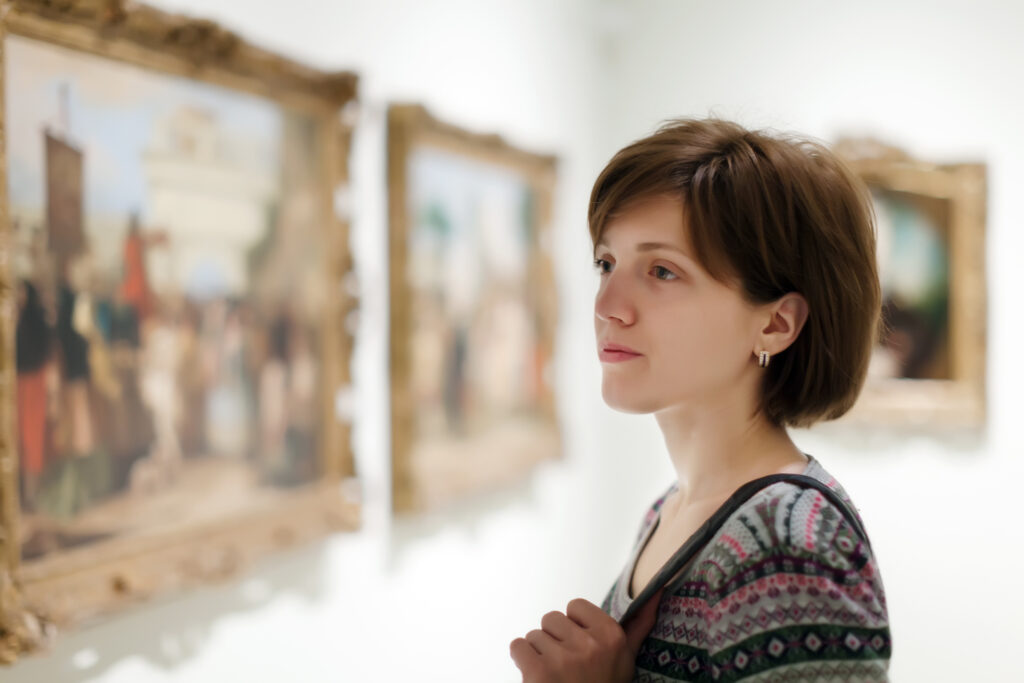
Planning a Field Trip
It’s time to clear your throat, don your strongest teacher voice, and get ready to put your ducks in a single-file line. There’s no such thing as being too prepared when it comes to planning a field trip. That’s why we created a Field Trip Packet with everything you need to plan a successful field trip from start to finish.
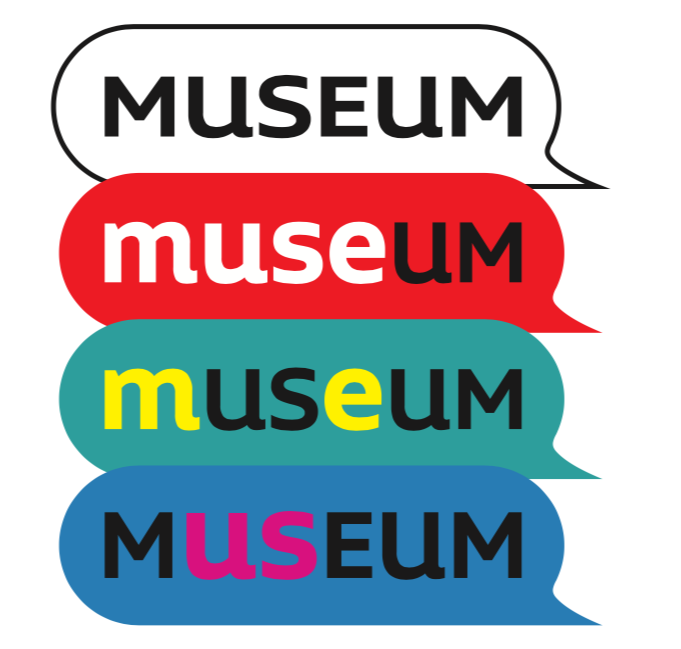
Field Trip Packet
The Field Trip Packet includes:
- Why Field Trips are Important
- Why Field Trips are Worth It
- Scheduling Tips
- Funding Tips
- Parent Communication Tips
- Busing Tips
- Chaperone Tips
- After the Field Trip Tips
- Planning Checklist
- Week of Field Trip Checklist
- Day of Field Trip Checklist
- Student Roster
- Parent Communication Template
- Permission Slip Template
For students:
- Museum & Trip Information Page
- Sketching Page
- Scavenger Hunt
- ‘I Am’ Character Poem
- Twitter Perspectives
- Exploring Place: The 5 Senses
- Trip Reflection Worksheet
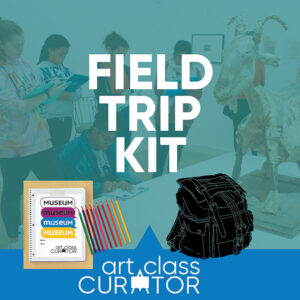
This Museum Field Trip Packet is full of documents to help you plan a successful field trip + worksheets and activities for students to complete during the museum field trip.
Scheduling your Field Trip
Check with your front office or school administration and find out what information you’ll need for planning a field trip. Usually, you’ll need to provide an itinerary of your trip. Be aware, some schools are sticklers and want near minute-by-minute schedules.
Please note, this post includes Amazon affiliate links. As an Amazon Associate I earn from qualifying purchases.
This is also a good time to find out what dates you’ll need to avoid planning a field trip on—testing dates, other field trips, assemblies, and so on. Be sure to ask when you’re allowed to leave and what time you’ll need to be back. Often, field trip times are limited by bus schedules and pickup times.
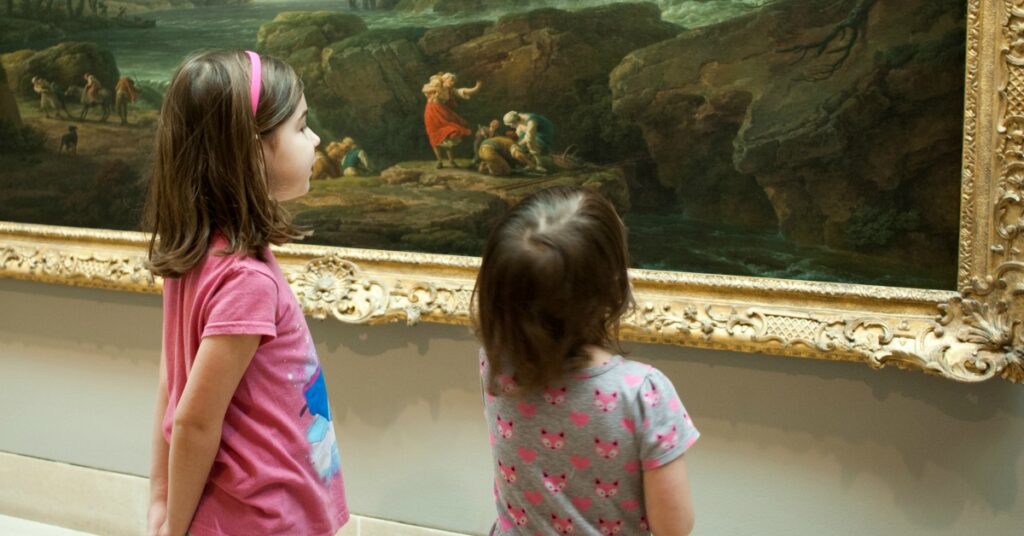
With potential dates in hand, call the art museum to book your tour. Museum staff will usually provide you with all the information you need for planning a field trip, but make sure you get these questions answered:
- How many students are allowed per group? (Museum tours usually limit the number of individuals to 15 or so, but ask your museum so you know for sure.)
- How many chaperones are required?
- What time should you arrive with students?
- Where do you park?
- Where do you enter the museum?
- Where can you eat lunch? Are there any museum policies regarding food that you need to be aware of?
- Can students go into the gift shop?
Field Trip Funding
Talk with your front office about funding your art field trip. Art museum visits are usually free, but someone needs to pay for the bus. Figure out if the school or district can pay for it or do you need to collect money from the students. Divide the amount needed by the number of students going to get the amount each will owe. If you teach at a low-income school, ask the museum if they know of any grant possibilities for funding buses.
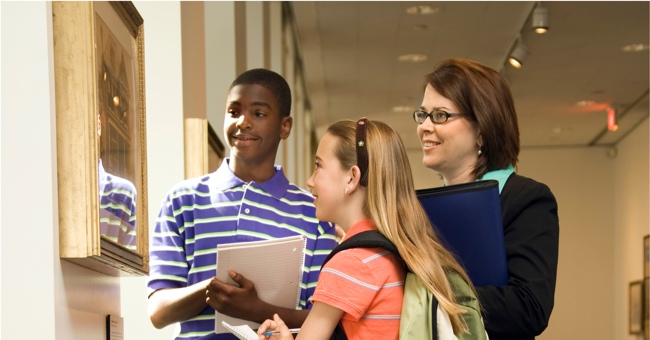
Ask your school about the best method to collect funds. Some schools do not allow teachers to give students change, in which case you’ll need to ask students to bring the exact amount. If you are allowed to make change, keep a bunch of $1 bills on hand. Keep meticulous records of the money collected. Receipt books are an easy way to keep track and can be purchased cheaply from places like Wal-Mart, Target, or an office supply store. This will make keeping track of all the money paid and owed. Trust me, you’ll be glad to have it when a student insists they already paid.
Get a big envelope to hold the funds and keep them locked in your desk or file cabinet. Ask your front office if they want it all turned it at once or at the end of each day. Print a roster of all of the students who are supposed to go on the trip to keep alongside your envelope. Make two columns alongside each name, one for money and another for permission slips.
Field Trip Permission Slip and Parent Communication
Make sure you follow your school’s protocol for sending and collecting field trip permission slips. They should have a standard form you can use. Set a deadline for your students to turn in permission slips well before the field trip and write the deadline across the top in huge, bold letters before you copy and distribute it to students.
With the field trip form, send a letter to the parents about the field trip. As a parent, I sometimes get random permission slips with no information and am lost trying to figure out what it’s for. Write a little note about how excited you are to take the kids to the museum and staple it to the field trip permission slip.
Scheduling Buses
First, figure out who is responsible for scheduling the bus. Do you do it? Does your front office do it? Does the district do it? Even if you think you know, double check! Once the art field trip is scheduled, get the bus scheduled as soon as possible. When planning a field trip, be sure to factor in driving time, getting on and off the bus, and any possible traffic into your decisions about when the bus should arrive for pickup.
When the bus arrives, be sure to get the name and cell phone number of the bus driver, as well as the bus number. You don’t want to be lost in a maze of buses with students in tow or be late getting back to school because you can’t find your driver.

Field Trip Lunch
With so many details to consider, you might forget about planning a field trip lunch, but don’t make that mistake! Consider:
- Will you be back in time for lunch or do you need to bring lunches? Work with the front office and cafeteria staff to plan sack lunches for your students.
- Do the students need to order their sack lunches in advance? If so, get the form to send home alongside the parent letter and permission slip.
- For students packing lunches, it is best to put their lunches in disposable containers so everything can be thrown away and you don’t have to worry about kids losing their favorite lunch box.
- Will the museum allow you to store lunches somewhere inside or will they need to stay on the bus?
- Where will you eat lunch? The museum staff can tell you where to go. If they don’t have a designated courtyard or cafe, consider visiting a nearby park.
- Will you allow students to buy food? Many museums have a cafe or are located in metro areas with nearby restaurants. For example, at the Dallas Museum of Art , there are always food trucks at a park across the street. When I took middle schoolers, I allowed a chaperone to accompany them to the park to buy lunch from the food trucks. If so, don’t forget to add that to your parent letter!

What to Bring with You on the Art Field Trip
- First aid kit (Often the front office or nurse will have something already prepared for you to bring.)
- Roster of all participating students
- Cell phone numbers for your chaperones, plus the school and museum phone numbers
- A map with directions to and from the destination for the bus driver—They probably know where to go, but it’s good to have ready just in case.
- An art field trip museum assignment for the students to complete. Get creative! Look at the current collection on the museum website and create a scavenger hunt or bingo cards. Encourage the students to interact with the artworks by using art appreciation worksheets .
- Pencils and paper
In addition to these things, talk with the school nurse about which students are going on the trip to find out if any medications or special precautions are necessary.
Field Trip Chaperones
Once you know how many field trip chaperones you need, recruit other teachers and parents. Your school or the museum you’re visiting will likely have their own guidelines for you to follow. As a rule of thumb for museum tours, be sure you have at least 1 adult per 12-15 kids.
Print personal copies of all the information each field trip chaperone will need—times, when and where to meet, the bus number, names of children they will watch, expected behavior, and your cell number. (Don’t forget to get their cell number as well!) Put the information in a folder or on a clipboard so it’s easy to keep everything together.
For each teacher going on the trip, make sure substitutes will be available to cover their classes. If there will be a sub in your classroom, plan your sub lessons. Pair an art appreciation worksheet with an artwork for an easy, mess-free sub lesson. You can even tie it into the art field trip by choosing one or more artworks students will see in the museum.
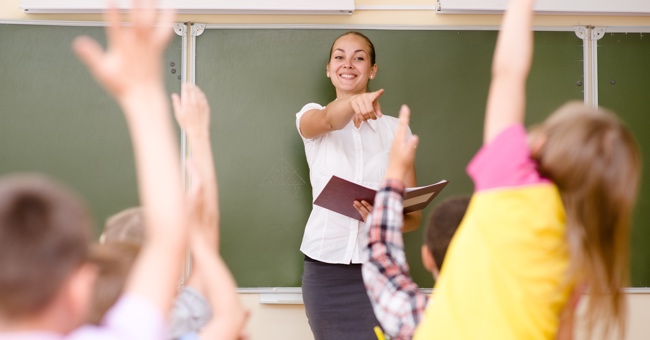
Preparing the Students for the Trip
Get your students excited for the art field trip! Beyond the novelty of getting out of school for a bit, you want them psyched for the experience too. Here are some ways to do that:
- Share pictures of the museum and the type of art they will see
- Lead art discussions with students so they can show off their awesome art interpretation skills (They’ll be sure to impress their chaperones and museum guides!)
- Discuss expected behavior. (More on this below)
- Use museum resources—museums often send great lessons and supplemental information before your art field trip. These are perfect for both pre-visit and post-visit lessons and will help students remember what they see.
- Tell students the schedule in advance what you’ll expect from them and and what they should expect regarding lunch, buses, gift shop, free time in the museum, etc. Repeat this information before you leave, on the bus, and when you arrive.
Student Behavior
As a former museum educator, I can tell you I rarely had an uncontrollable student groups. Students love field trips and the museum environment helps them stay in line. Nonetheless, discuss behavior in advance, plan and tell them consequences for misbehavior. Student behavior is a reflection on you and the school, so make sure to follow through on consequences if needed. Remember, if they respect you, they won’t want to make you look bad . Be sure students know that you’re watching and that all of the field trip chaperones will report back on their behavior.
Student Rules for Art Field Trips
- Don’t touch the art—keep an arm’s length from artworks at all times.
- Don’t yell.
- Treat the docent, museum staff, chaperones, and each other with respect.
- Participate in the lesson.
- No bags/backpacks allowed.
- No food/candy/gum/drinks
- No pens, pencils only. (The museum will provide pencils when needed.)
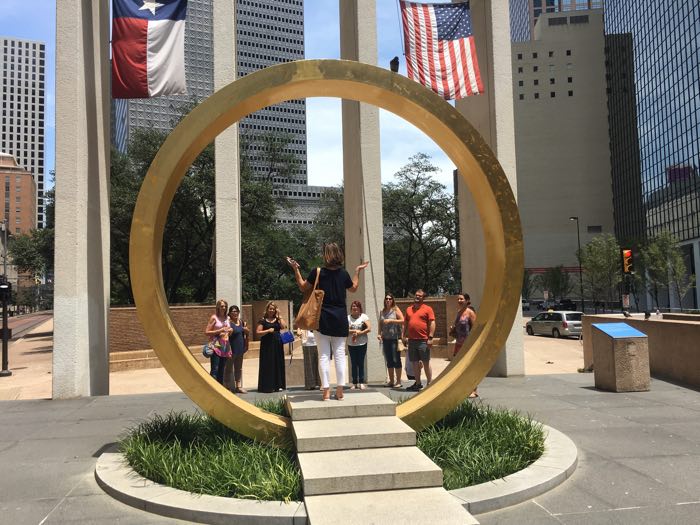
Field Trip Chaperone Behavior
Honestly, the worst behavior I saw when I was a museum teacher came from parents and field trip chaperones. Don’t shy away from including a do and don’t list in the information you give chaperones.
Don’t Do List for Field Trip Chaperones
- Talk loudly in the background with other adults.
- Treat the tour as a break. The museum teacher needs your help controlling poor behavior and inattention.
- Answer questions asked of students. It’s fun to participate in art discussions, but don’t take the opportunity away from the students. (If you’re still itching to participate in art discussions, join me every Monday at 6 pm Central on Facebook for Masterpiece Monday ! Get reminders by clicking here .)
- Play games or scroll through social media on your phone. If you aren’t respecting the learning and experience, your students won’t either.
- Lose anyone.

What to Do List for Field Trip Chaperones
- Direct student attention. Pay attention to who is or isn’t engaged. If someone isn’t paying attention, give them your best teacher look, stand by them, and talk to them between stops on the tour about their behavior.
- Model enjoyment and delight in the art. Engage with the art and the students to show them that this is a wonderful, fun experience.
- Know the info—who is in your group, where to go and when to be there, the bus number, etc.
- Constantly check to make sure all of the students in your group are present and accounted for. Count again and again.
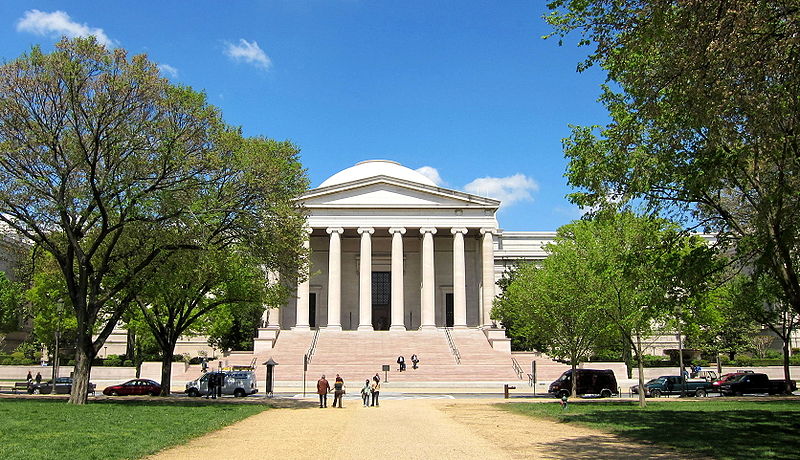
After your Art Field Trip
When planning a field trip, don’t forget to think about the follow-up! On the return bus ride or when you get back to school:
- Have students write three art field trip takeaways.
- Ask students to reflect and write a paragraph about the experience.
- Lead a class discussion about what they saw and did. (What did they like/not like? What surprised them about the experience? Do they want to go back?)
- Have students draw pictures for or write thank you letters to send to the art museum. (The museum most likely offered that tour for free and the teacher was probably a volunteer. Make their day with a lovely note.)
- Thank students for good behavior
- Follow through on the discipline plan by giving consequences for poor student behavior.
- Send a follow up letter to parents telling them about the art field trip and encouraging them to visit the art museum as a family so students can show their parents what they learned. Make sure to include information and upcoming events at the museum, as well as any free admission the museum offers.
When all is said and done, take time to reflect on the art field trip yourself. Take stock of what went well and what didn’t work. Take note what your students enjoyed and what you’d like to do differently next time. Breathe. Enjoy a job well done. Then, start planning your next artful excursion!
You May Also Enjoy These Posts:

Reader Interactions
Leave a comment cancel reply.
Your email address will not be published. Required fields are marked *
This site uses Akismet to reduce spam. Learn how your comment data is processed .
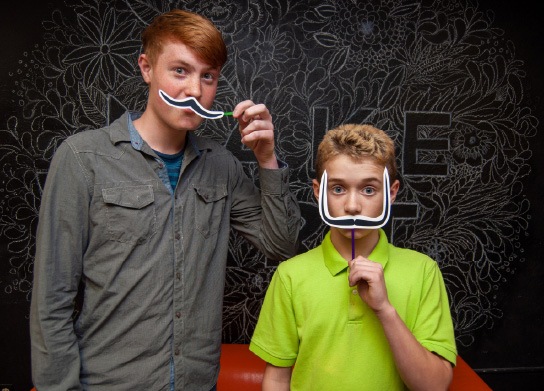
Get Art Inspiration To Your Inbox!
Free Worksheets!
*Free Bundle of Art Appreciation Worksheets*
In this free bundle of art worksheets, you receive six ready-to-use art worksheets with looking activities designed to work with almost any work of art.
Field Trip Reflection Sheet (Free Printable)
Field trips are amazing! They give kids the chance to explore a new place, learn more about specific topics, talk to experts, and see demonstrations and examples you just can’t do at school. Whether you’re taking a field trip to a local library or zoo or you’re participating in a virtual field trip to a space center or aquarium, you’ll want the field trip to be a pivotal learning experience. That’s where our Field Trip Reflection Sheet comes in.
The impact field trips have on students often has to do with how they engage with the information they learn. Incorporating a field trip reflection worksheet helps students focus on what’s important to them and what it means for their learning and life. Get the free Field Trip Reflection Worksheet by simply filling out the form on this page.
What kind of reflection sheets are in the bundle?
You’ll find two field trip reflection sheets, one for elementary schoolers and one for middle and high schoolers. Each reflection sheet works for either in-person or virtual field trips.
Elementary School Field Trip Reflection Sheet
Elementary schoolers can identify where they are going and what they are going to learn about before they head out of the building or log in to the field trip. Then, during the field trip, students record observations and information they learn. After the trip, students choose one response as a reflection to help consolidate their learning.
Middle and High School Field Trip Reflection Sheet
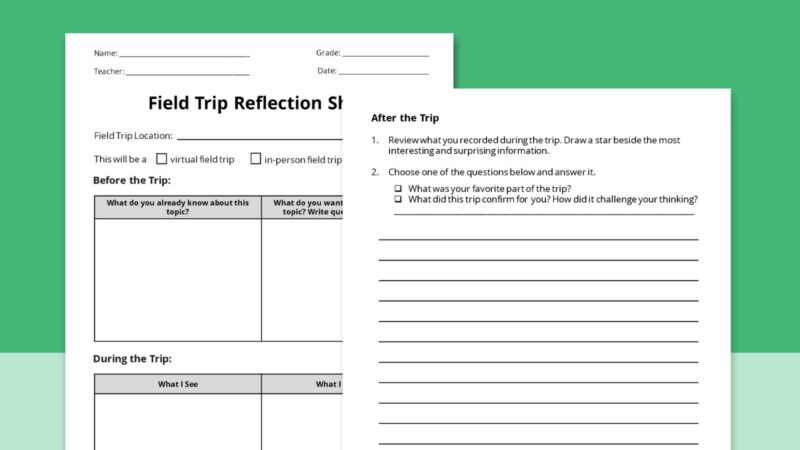
Before the trip, older students activate background knowledge so they’re primed to connect new information with what they already know. Once on the trip, they record observations and information. After the trip, students can choose a question or answer a teacher-directed question to consolidate what they learned.
What are some field trip reflection questions?
Here are ideas for field trip reflection questions that you can incorporate into the Field Trip Reflection Sheet:
- What was the most important thing you learned on today’s field trip?
- What should someone else know about this topic?
- What was your favorite part of this field trip?
- Who else would enjoy this field trip and why?
- How does the information you learned on today’s field trip connect with what you already knew?
- What is one way that the information you learned today confirms what you already knew? What is one way that it challenged what you already knew?
- In five years, what will you remember from this field trip?
Use the Field Trip Reflection Worksheet as a way to keep students focused. You can also use it as an exit ticket or assessment after the trip. This is especially helpful for field trips that require parent chaperones as you can see what students were doing during the trip and provide some accountability for students’ learning.
Get your free Field Trip Reflection Sheet printable!
To get your free printable bundle, just fill out the simple form on this page for instant access.
Need field trip ideas? Check out these 260+ field trip ideas (in-person and virtual).
About the author.

Kelly Smith
Start typing and press enter to search.
- Grades 6-12
- School Leaders
100 Last-Day-of-School Activities Your Students Will Love!
40 Amazing Educational Virtual Field Trips
No permission slips needed.
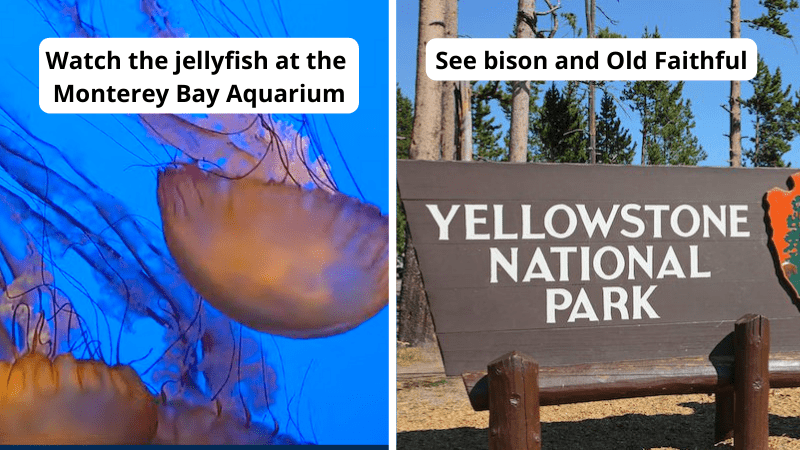
Virtual field trips are a game changer. Not only do they fill in for real field trips when budgets and other roadblocks prevent in-person options, but virtual field trips also open doors to educational experiences all over the country and the world, both past and present. No fundraising or permission slips required!
(Note: For anyone who needs it, YouTube offers a closed-captioning option. Just click the CC button in the bottom right-hand corner.)
1. Amazon Career Tours
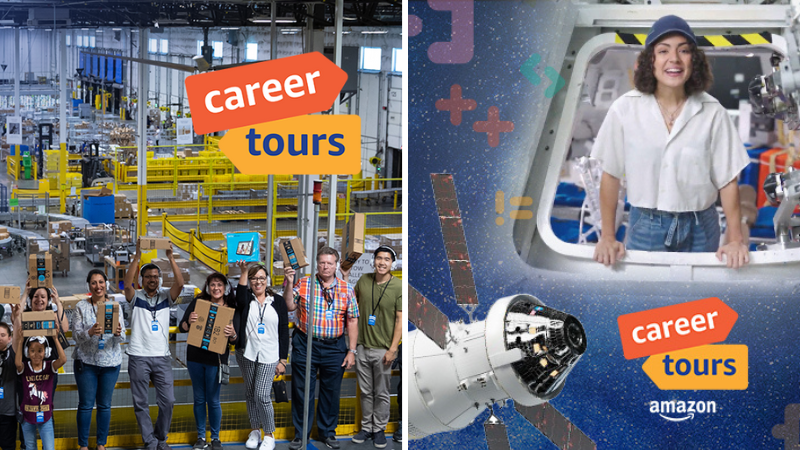
Amazon Career Tours are free virtual field trips that inspire students to pursue careers of the future. Tour whenever, wherever on Kahoot! Each tour comes with a Teacher Toolkit that includes a facilitation guide and student worksheets.
- (New!) Amazon Music: Careers Behind the Beats : From studio to streaming, check out how computer science and amazing professionals make listening to your favorite songs possible.
- Amazon Fulfillment Center Tour : Explore how packages get delivered at lightning speed and how computer science, engineering, and real people work together to make the magic happen.
- Data Center Tour 1: Uncovering Cloud Computing : Do students know what “the cloud” actually is? Find out how we went from renting movies at the store to streaming them from anywhere at any time.
- Data Center Tour 2: Keeping Data Safe and Sustainable : Discover the infrastructure that keeps your information safe and sustainable while diving into data careers of the future.
- Space Innovation Tour : Students will learn about the amazing technology on board the Orion spacecraft in NASA’s Artemis I flight test and hear from the engineers who made it all possible.
There are so many amazing online options when it comes to zoos that we couldn’t narrow it down to just one. Most zoos have live webcams in some of their most popular exhibits, such as the KC Zoo Polar Bear Cam and the Giant Panda Cam at Smithsonian’s National Zoo . However, some zoos offer a more in-depth look. You’ll definitely want to check out the San Diego Zoo as their site for kids includes behind-the-scenes videos and stories, as well as a variety of printable activities and online games. Check out our full list of virtual zoo goodness.
3. The Aquarium
It’s a similar story with aquariums. You have your pick of live webcams, but our favorites are the Georgia Aquarium’s Ocean Voyager webcam (wait for the whale shark!) and the “Jelly Cam” at Monterey Bay Aquarium (so soothing). The Seattle Aquarium even has a 30-minute video tour . Want more under-the-sea fun? Here’s our ultimate list of virtual aquarium field trips.
4. The Farm
The classic preschool field trip goes online! You can have your pick of dairy farm field trips, but we like this one from the Dairy Alliance and this one from Stonyfield Organic . Farm Food 360 gives students the opportunity to immerse themselves in Canadian farm and food tours—from raising pigs to making milk and cheese. We’re also loving these virtual egg farm field trips from the American Egg Board.
[contextly_auto_sidebar]
5. An Art Museum
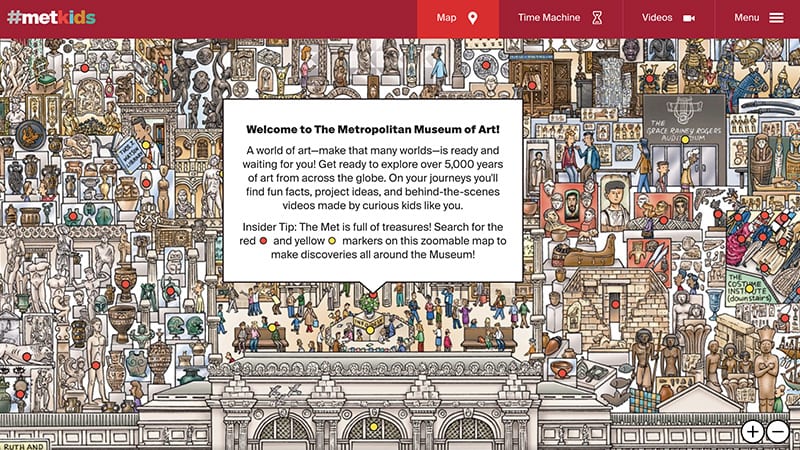
We found 20 art museums with virtual tours , including the Metropolitan Museum of Art’s # MetKids and its awesome Where’s Waldo? setup. And you can’t miss the world-famous Louvre in Paris (no passport needed!). Check out the current virtual tours: Traveling Materials and Objects, the Advent of the Artist, the Body in Movement, and Founding Myths: From Hercules to Darth Vader!
6. A National Park
From webcams at Hawaii volcanoes to a virtual run along the rim of the Grand Canyon , you have tons of options here. Our top pick would have to be Yellowstone. The interactive maps are a great way to see the Mammoth Hot Springs and Mud Volcano, but we think kids will be psyched about the Old Faithful Geyser livestream and the opportunity to make their own predictions for its next eruption . Check out everything the National Park Service has to offer virtually.
7. A Planetarium
Through Stellarium Web , kids can explore over 60,000 stars, locate planets, and watch sunrises and solar eclipses. If you enter your location, you can see all the constellations that are visible in the night sky in your corner of the world.
8. A Recycling Center
Take your students on a virtual field trip of a recycling center and a modern landfill . Plus, there’s a full-on curriculum that includes lesson plans, take-home handouts, and more.
9. Slime in Space
Nickelodeon teamed up with two astronauts on the International Space Station to demonstrate how slime reacts to microgravity and had kids reproduce those same demonstrations back here on Earth. It makes for an amazing 15-minute virtual field trip .
10. Nature Lab
The Nature Conservancy has a brand-new virtual field trip entitled “You’re the Scientist! Citizen Science, Frogs & Cicadas.” Check out their full library of videos on topics like climate change and water security.
11. Discovery Education
Discovery Education hosts a variety of virtual events —each with a companion guide with hands-on learning activities. Current offerings include “Making a New Life: The Courage of a Refugee” and “The Future Is Now” (architectural and engineering innovations). Stay tuned for their upcoming civics virtual field trip, “The American Ideal.”
12. The Great Lakes
This virtual field trip from Great Lakes Now has three components: coastal wetlands, algae, and lake sturgeon. Each video is a quick five minutes long.
13. The Strong National Museum of Play
Explore online exhibits and discover the history and evolution of play. Check out board games that changed play, sports video games that shaped digital play, and the making of Monopoly to name a few.
14. U.S. Census Bureau
Kids can learn about the most recent Census and how census data is collected and used. This virtual field trip also features interviews with subject matter experts and an interactive challenge.
15. National Constitution Center
The “Museum of We the People,” the Constitution Center serves as a “headquarters for civic education.” Check out the Interactive Constitution section , and be sure to watch the virtual tour .
16. The Johnson Space Center
Houston, we have a virtual field trip. Three, actually. All with companion educator guides. The star of the show is the behind-the-scenes tour of the Johnson Space Center .
17. Birthplace of Music
Boise State put together this fully interactive virtual field trip with text, photos, audio, and video about the history of music. The four featured music locations are: Vienna, Austria; New Orleans, Louisiana; Cleveland, Ohio; and Bristol, Tennessee-Virginia.
18. Colonial Williamsburg
This living-history museum provides a look into life in an early American community. The website offers five different webcams featuring areas such as the tavern and the armory.
19. Mount Vernon
This virtual experience of George Washington’s home is incredibly well done. Enter the different buildings—from the opulent mansion to the chilling slave quarters—and click on different items for video and text explanations.
20. Mount Rushmore
This virtual tour comes with a real tour guide! Blaine Kortemeyer is the Assistant Chief of Interpretation and Education, who lends his expertise on the building of this national monument. The 3D Explorer is also an excellent tool.
21. The Manhattan Project
Take a visit to the National WWII Museum for “a cross-country virtual expedition to discover the science, sites, and stories of the creation of the atomic bomb.” Don’t forget to download the classroom guide!
22. The White House
For a look inside the iconic building, check out the 360° tour of some of the most historic rooms of the People’s House, from the Situation Room to the Oval Office. Examine each room and check out the contents up close.
23. The Smithsonian
The National Museum of Natural History’s virtual experiences are self-guided, room-by-room tours of permanent, current, and past exhibits. Be sure to send kids to the second floor Bone Hall so they can take a look at all different kinds of skeletons.
24. Google Arts & Culture
A collaboration with over 1,200 leading museums and archives, Google Arts & Culture is an incredible storehouse of monumental works of art. We recommend the Street View and Play sections.
25. 360 Cities
Boasting the world’s largest collection of 360° image videos, 360 Cities provides kids with the opportunity to see stunning panoramas across the globe, including their video of the ice floe on the Vistula River in Poland.
26. Buckingham Palace
It’s the official residence of the Queen of England, and boy, is it opulent! Get a peek inside the gorgeous Grand Staircase, White Drawing Room, Throne Room, and Blue Drawing Room.
27. The Great Wall of China
See one of the wonders of the world with this amazing, thousands-year-old fortification system known the world over. This virtual tour has four scenes available (you have to pay to get access to all 14). The bird’s-eye view of Mutianyu pass is a highlight.
28. Easter Island
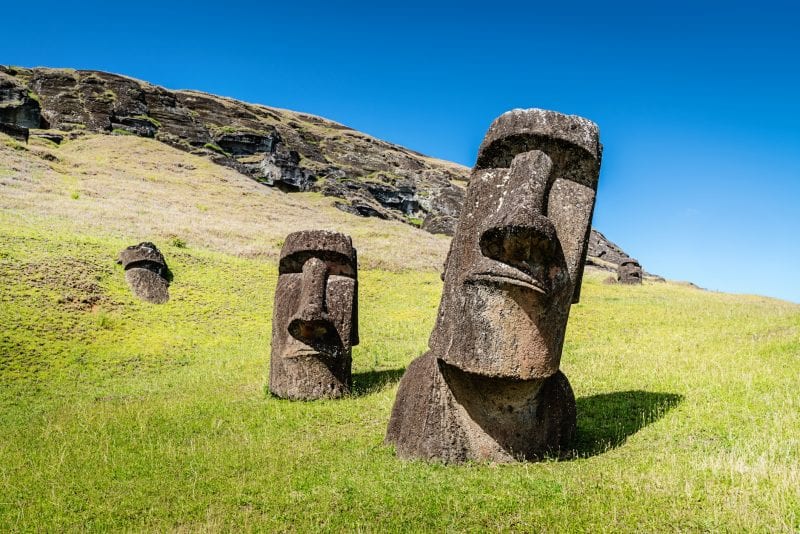
Most of us recognize the giant stone statues of Easter Island, but what’s the story behind them? Nova’s online adventure “Secrets of Easter Island” delves into the mystery with a virtual tour.
29. Son Doong Cave
National Geographic lets you explore the world’s largest cave, located in Vietnam. Use the interactive map to enjoy the fully immersive experience (sound on!).
30. Ancient Egypt
You don’t need a time machine! Discovering Ancient Egypt has a ton of free resources, but it’s the interactive pyramid map and 3D temple reconstructions that really give it a field trip feel.
31. Back Through Time
Virtually visit Turn Back the Clock , a museum exhibit that ran for two years at the Museum of Science and Industry, Chicago. Through compelling personal stories, innovative interactive media, and pop culture artifacts, the exhibit takes guests through seven decades of history—from the dawn of the nuclear age to significant policy questions our leaders face today.

No, really! You can absolutely “go” to the red planet. With Access Mars , you can see the actual surface of Mars, recorded by NASA’s Curiosity rover. Trust us—don’t skip the intro. And if your kids liked that, check out this 4K tour of the moon . These may go down in history as some of the best virtual field trips your students get to experience.
33. The Battleship New Jersey
Take a virtual tour of this historical battleship located on the Camden waterfront. This battleship has traveled more miles than any other!
34. The Vatican
No need to travel to Rome! Take in the amazing art and architecture located in the Vatican Museums with these 360-degree views.
35. Space Center Houston
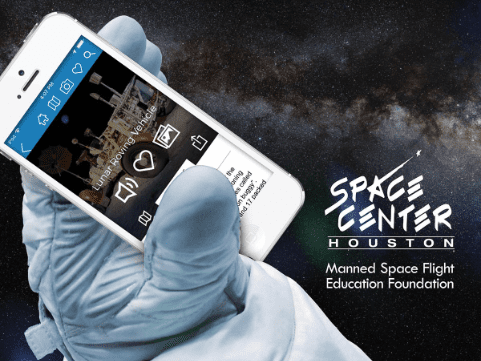
Download the app and climb aboard the virtual tram line! Take a virtual walk through the Space Center Houston with informational stops along the way.
36. The Louvre
Virtually visit museum rooms in the famous Louvre located in Paris. Even check out The Louvre kids’ site for student-friendly galleries and stories. You can’t visit The Louvre without seeing the Mona Lisa , so check out their immersive Mona Lisa experience available in the app store.
37. Ellis Island
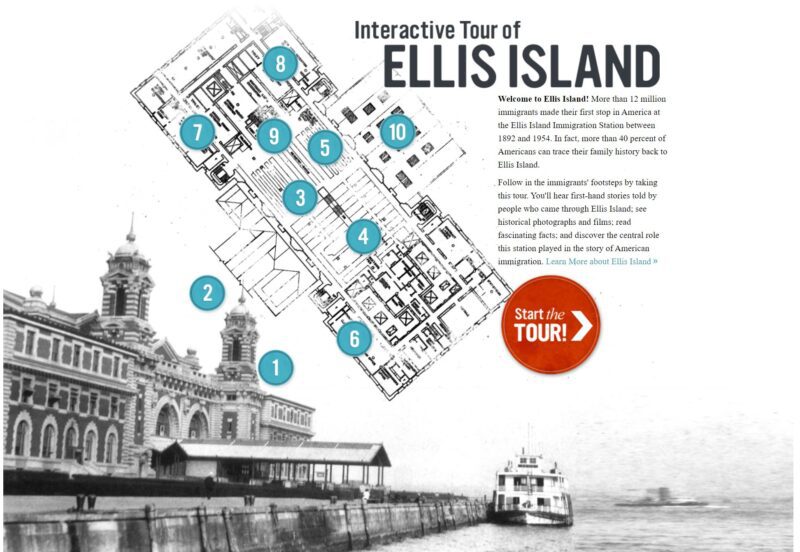
This interactive tour of Ellis Island lets students explore places like the Baggage Room and the Stairs of Separation through short stories, historical photographs, videos, and audio clips. Students can also hear the stories of real kids who recently immigrated to the United States, explore colorful charts and graphs with immigration data, and watch a 30-minute movie that includes a Q&A with National Park Service Rangers who explain what coming to America was like for many immigrants.
38. Plimoth Patuxet Museums

Travel back to the 17th century with options for free, on-demand, digital resources or a live, 1-hour virtual school program led by a Plimoth Patuxet Contemporary Indigenous Museum Educator. Students explore Wampanoag daily life and history; discover the real history of Thanksgiving and the legend behind it; meet a 17th-century Pilgrim; get an interactive sneak peak into 17th-century wardrobes; and learn about simple machines and water power at the Plimoth Grist Mill. There are also options for virtual hands-on history workshops, including Wampanoag Pottery and Write Like a Pilgrim.
39. Children’s Museum Houston
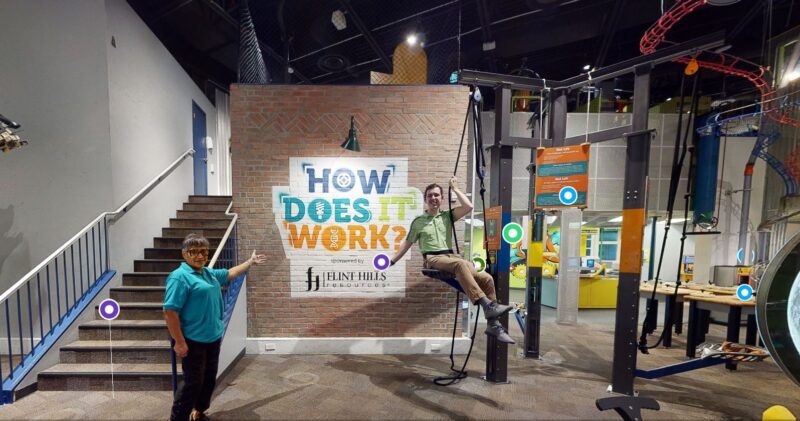
When you can’t visit the museum in person, 3D virtual field trips to the Children’s Museum Houston are the next best thing. All videos are produced and curated by museum educators and feature hands-on activities that can be done in the classroom. Topics include nutrition, math, states of matter, forces and properties of water, and more.
40. Museum of the American Revolution
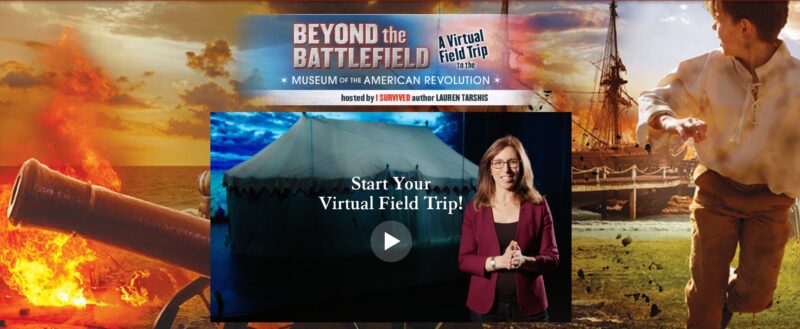
Beyond the Battle Field is a virtual field trip for grades 2-8 hosted by Lauren Tarshis, author of the I Survived historical-fiction series for kids. Students will meet a museum educator as well as the museum curator, and explore artifacts and documents from the American Revolution. Plus they’ll hear the stories of teens who served during the war. There’s also a Classroom Kit available with a vocabulary list and discussion questions by grade level.
If you liked this roundup of the best virtual field trips and want more resources like this, be sure to subscribe to our newsletters.
Plus, check out the best field trip ideas for every age and interest (virtual options too) ..
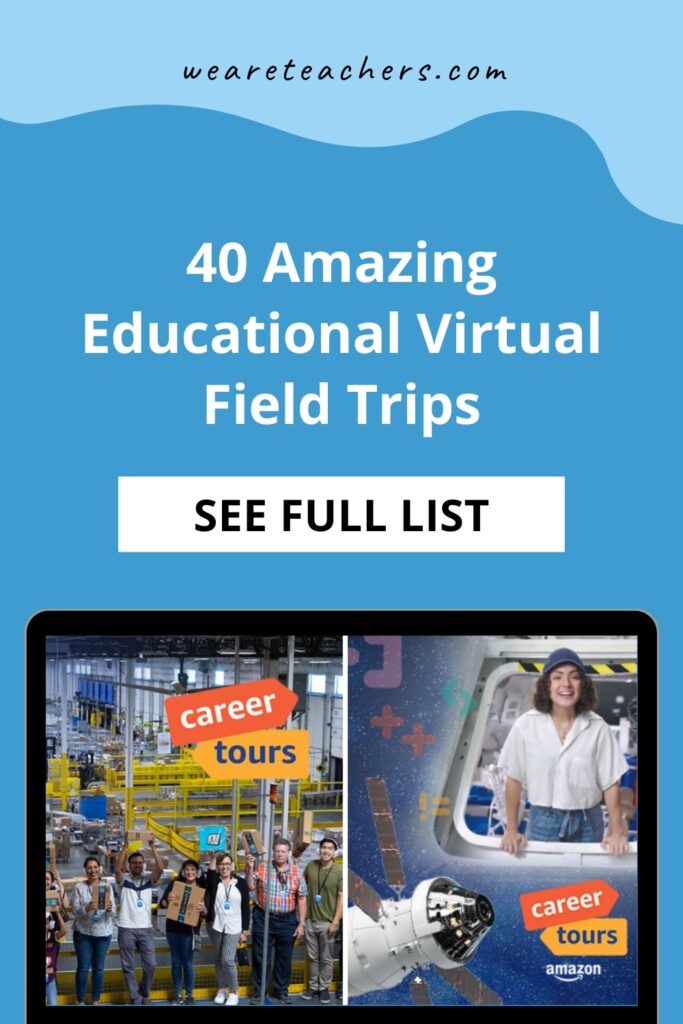
You Might Also Like
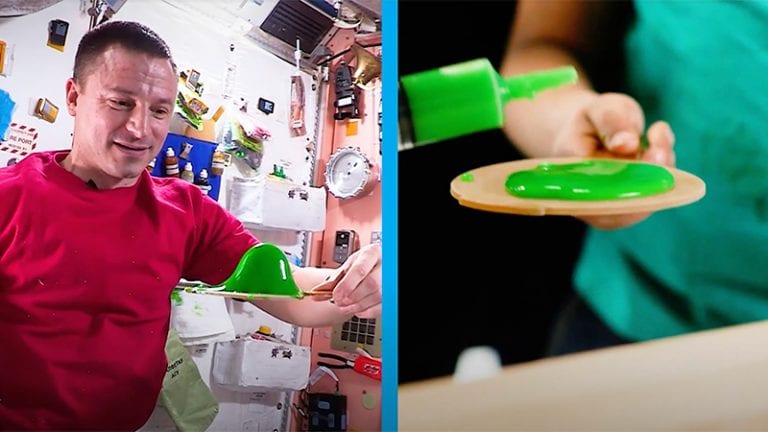
Check Out This Amazing Nickelodeon Slime in Space Virtual Field Trip
EVERY KID wants to watch astronauts play slime ping pong in space! Continue Reading
Copyright © 2024. All rights reserved. 5335 Gate Parkway, Jacksonville, FL 32256
field trip reflection activity
All Formats
Resource types, all resource types.
- Rating Count
- Price (Ascending)
- Price (Descending)
- Most Recent
Field trip reflection activity
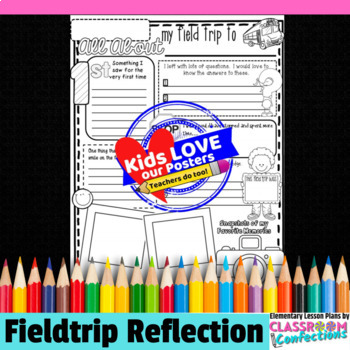
Field Trip Reflection Worksheet : Field Trip Writing Activity 3rd 4th 5th Grades

Virtual Field Trip and Reflection Activity

Field Trip Reflection and Activities

Field Trip Activity Packet: Predictions, Expectations, Notes, Reflection & More

Field Trip Reflection Writing Activity & Thank You Note
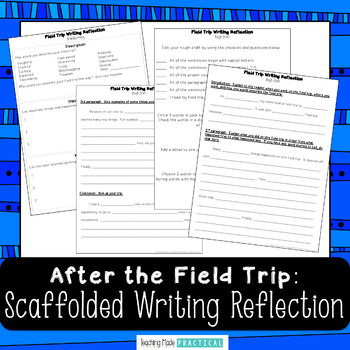
After Field Trip Writing Activity and Reflection - Scaffolded Report Writing
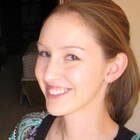
Zoo Field Trip Reflection Writing Activity & Thank You Note
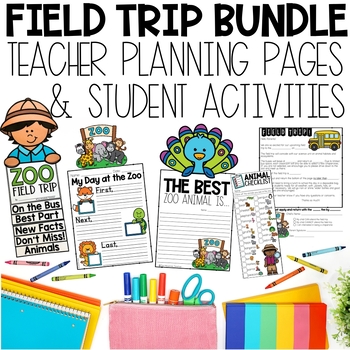
Field Trip Permission Slips, Student Reflection Activities and Editable Forms
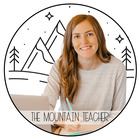
Field Trip Log and Reflection Writing Activity

Field Trip Activity Bundle: Reflection Journal, Word Search Thank You & Writing
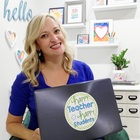
Field Trip Reflection Forms Worksheet | School Trip | Activity |

Museum Field Trip Permission Slip, Student Reflection Activities , Editable Forms
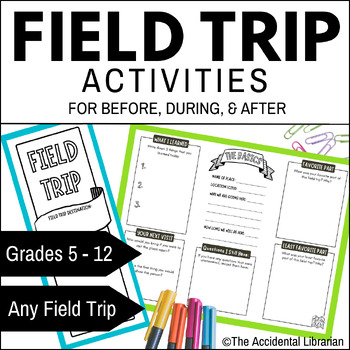
Field Trip Reflection and Activity
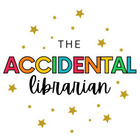
Field Trip Reflection Writing Activities , Mindfulness Mandala Coloring Sheets
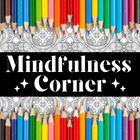
FREE Field Trip Reflection Writing Activity - Snapshots of My Field Trip
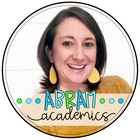
Zoo Field Trip Permission Slip, Student Reflection Activities and Editable Forms

Aquarium Themed Field Trip Activity Packet with Reflection
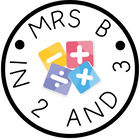
Field Trip Reflection Worksheets , Drawing & Writing Activities

Post- Field Trip Reflection /Review (+ Activities )

Zoo Field Trip Writing Activities | Opinion | Reflection

EDITABLE field trip reflection before after fieldtrip art writing activity easy

- Google Slides™
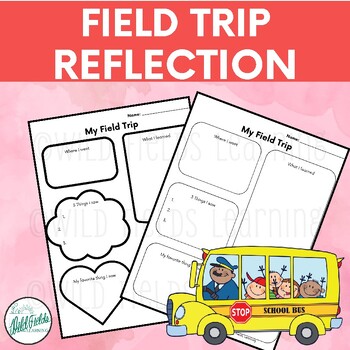
Field Trip Reflection Worksheet: Field Trip Writing Activity

Aquarium Field Trip Reflection Writing Activity & Thank You Note
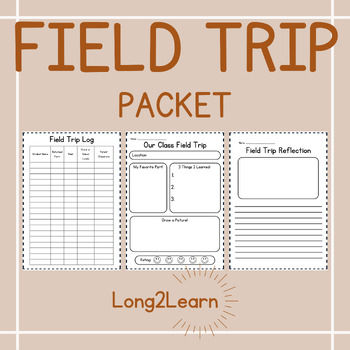
Field Trip Packet | Reflection | Activities | Poster | Scavenger Hunt

- We're hiring
- Help & FAQ
- Privacy policy
- Student privacy
- Terms of service
- Tell us what you think
- Forms for Educators
- Apply for a discount
- Sign Up for Free

- Educational Technology
How to plan a school field trip
Steps to planning a school field trip
- Commit to early planning
- Decide on your destination
- Get buy-in from administrators
- Contact the site
- Arrange transportation
- Plan food options
- Recruit chaperones
- Prepare students for the trip
- Get permissions from parents
Students love field trips — especially since they break up the normal school routine — but they’re often stressful for the educators who have to plan them. Pulling off a successful school field trip requires an enormous amount of preparation and organization, but it all translates into a rewarding educational experience for participants that has a long-lasting, positive impact.
According to a study cited by the National Education Association , students who took part in school field trips had better grades and graduation rates from both high school and college. They also eventually earned a higher income than their counterparts who hadn’t participated in such trips as students.
The hands-on, experiential learning students get from school field trips delivers a lot of other benefits — like increased knowledge retention, a more developed sense of independence, access to other cultures that broaden students’ horizons, and the chance to bond with other students and create life-long memories.
And the planning part? It doesn’t have to be daunting if you start early. Plus, we’re making it a little easier by giving you nine tips for organizing a successful school field trip and 23 field trip ideas.
9 steps to planning a successful school field trip
1. commit to early planning.
The earlier you begin planning, the less stressed you’ll be if and when obstacles arise. There are a lot of details to iron out, such as
- Researching and selecting a destination
- Getting feedback from administrators, parents, and students on the destination
- Planning the educational portion of the trip
- Getting parental permissions
- Arranging transportation
- Figuring out a meal plan
- Recruiting chaperones
Giving yourself a long lead time will help you tackle any unexpected snafus along the way.
2. Decide on your destination
Do some initial research and brainstorm potential school field trip destinations based on your learning objectives and curriculum goals. Consider location, cost of entry and parking, the ages and number of participants, the duration (e.g., a day-long excursion or an overnight trip), and any other key details that factor into the selection of an appropriate field trip destination.
Once you come up with a couple of good options, get feedback from colleagues, administrators, parents, and, if appropriate, the students themselves.
3. Get buy-in from administrators
Once you’ve decided on the ideal location for your field trip, be sure to get clearance from the appropriate administrators before you discuss trip details with students. You don’t want to get their hopes up if the administration rejects your carefully laid out plans!
Share the costs, the benefits of the trip for students, the days and times for the trip, and any other relevant details to help get the administration on board.
4. Contact the site
Once you have a “yes” from the powers that be, get in touch with the site and confirm that your preferred days and times are available. Make reservations if necessary, find out about group rate discounts and cancellation policies, pay any required deposits, and verify the site is accessible to those with disabilities. You can also share the number of children that will be in attendance and the special needs your students have, if any.
If it’s possible, conduct a site visit before the trip to get the lay of the land, locate the restrooms, note where students will be eating lunch, and any other relevant information it would be helpful to know before the field trip.
5. Arrange transportation
Now that you know where you’re going and when, it’s time to plan how you’re going to get there. You’ll likely travel by school bus, but if your group is smaller, you might get there in staff vehicles or even via public transportation. If you’re using school buses, you’ll need to reserve them in advance to be sure they’re available the day of your excursion, and you’ll have to fill out the required forms.
6. Plan food options
Of course, a day-long outing is going to require some serious planning, because no one wants a bunch of hungry kids on their hands!
There are a few options for food. Students can bring their own lunches, which can make things easier for everyone. Or you can make plans to eat at an onsite restaurant or cafeteria if one is available (which you may be able to reserve in advance).
Then there’s the option of eating at a restaurant, which might be the least palatable choice, given that kids might get unruly, you or they will have to handle money, and ordering could take a long time.
7. Recruit chaperones
Depending on the age of your students and the activities you’ve planned, it’s best to have a ratio of at least one adult to every 10 kids. If the students are younger, you may want more adults present.
You’ll need to recruit and confirm chaperones at least two to three weeks in advance, and be sure you have a list of alternates in case a chaperone has to drop out for any reason. Be clear with your chaperones that this is an educational trip and clearly share what you need them to do.
8. Prepare students (and parents) for the trip
Once all of your plans are in place and everyone’s excited, it will be time to share trip details with students and parents, and let them know what’s expected of them.
Hold an informational meeting for parents to discuss trip details, chaperone information, and rules and expectations regarding students.
Share trip rules with students and be clear about appropriate behavior. Let them know what the day’s itinerary looks like, what to bring, what to wear, and what not to bring (for example, anything of value that could get lost or stolen).
9. Get permissions from parents or guardians and automate the process where possible
Gathering permission slips from parents for school field trips is essential. Jotform can help simplify the process. If you want some tips to make this easier, check out our guide on how to collect online permission slips from parents .
We’ve also made it easy to automate your field trip planning with all the forms, tables, and templates you need for a successful school field trip:
- Field trip interest form
- Field trip permission form
- Field trip approval request form
- Field trip signup sheet
- Field trip permission slip template
And last, it probably goes without saying that you should be prepared in case you run into any emergencies. Bring along an emergency or first aid kit, and keep a list of parent contact information on hand.
Now that you have your planning to-dos sorted, how about some field trip ideas?
23 field trip destination ideas
Here are a few destinations that would make ideal learning experiences for students, depending on your curriculum goals and objectives:
- Botanical gardens
- Nature centers, bird sanctuaries, and wildlife refuges
- State and national parks and other natural attractions
- County and city parks
- Farms, orchards, greenhouses, and nurseries
- Community gardens
- Historic sites
- Planetariums
- Art galleries
- Cultural centers
- Radio and television stations
- Newspaper or local publication offices
- Police and/or fire stations
- Animal shelters
- Behind-the-scenes theater tours
- State Capitol Building and/or county buildings
- Local businesses
- Colleges and universities
If an onsite field trip isn’t feasible, you can plan a virtual school field trip as an alternative. Many of the organizations above can provide this service via video, guest speakers, demonstrations, or other presentations. Our handy virtual field trip registration form can get you started.
Try Jotform
Because Jotform loves educators, we have special pricing plans just for you. Get started today and receive a 50 percent educational discount for any paid plan . We have three plans to suit your needs:
- Bronze costs just $34 per month and includes 25 forms and 1,000 monthly submissions.
- Silver is $39 per month with 50 forms and 2,500 monthly submissions.
- Gold costs $99 per month and includes 100 forms and 10,000 monthly submissions.
We also offer a 30 percent discount on Jotform Enterprise for educational institutions. This powerful multiuser plan allows you to create beautiful, customized forms and protect response data securely online.
Hopefully, these nine steps, plus Jotform’s many resources for educators, will help you plan a stress-free school field trip that has a long-lasting, positive impact on everyone involved.
Photo by Norma Mortenson
Thank you for helping improve the Jotform Blog. 🎉

RECOMMENDED ARTICLES

What is Educational Technology?

How to collect online permission slips from parents

11 best class registration software solutions for 2024

The 7 best student management systems

How schools should approach long-term data management

Need new skills? These online learning platforms can help

6 Kajabi alternatives for offering online courses in 2024

Moodle LMS pricing: Which plan fits your learning journey?

Announcing our 2022 back-to-school toolkit

10 educators you should follow on Twitter

Top 8 online quiz makers for teachers

3 Types of Feedback You Should Be Collecting From Your Alumni

How to embed a form on a Thinkific page

Top scholarship management software

How to offer virtual office hours to your students

How teachers can help narrow the digital divide

An overview of Google Classroom’s pricing plans for K–12

Top 8 fundraising platforms for schools

How to reach shy students by engaging them online

11 kindergarten teacher blogs that will inspire you (and make you laugh)

How teachers do it: Saving time with tech tools

9 of the best apps for parent-teacher communication

Top 15 learning management system examples

How to incorporate tech in the humanities

How technology can help teachers recruit more parent volunteers

How to track student progress

How to minimize the disruption of school campus tours

How to design accessible online courses

What’s the best classroom response system?

Blooket vs Kahoot!: Comparing interactive learning platforms

35 top course evaluation question examples

Student survey questions: A guide for teachers

Gimkit vs Kahoot!: Choosing the right educational platform

Professional development for teachers: Importance of feedback for teachers

How to encourage digital creativity this school year

How to create online courses

What is distance learning?

8 tips for using Zoom for online learning

How to monitor student progress in special education

Quizizz vs Kahoot!: Choosing the right quiz platform

12 of the best WordPress plug-ins for teachers

3 important questions about education data collection

Quizlet vs Kahoot!: A comparative guide for educators

11 ways to use Jotform for distance learning

4 tips to help you adjust to unexpected lesson plan deviations

What is a learning management system?

Formative and summative assessments: How the right technology enhances learning

Top free software for students

Sending Your Graduation Party Invitations with Jotform

The top course evaluation questions to ask students

Webinar: 6 ways Jotform Enterprise can help your school do it all

How to review a scholarship application

How students and educators use Jotform surveys for research

What is microlearning?

10 best school management software tools

6 Jotform Features to Use for Back-to-School

Top 10 gamification apps for education

20 questions to ask alumni

Top 7 Quizlet alternatives in 2024

3 of the top online learning platforms

How to manage evaluations in education

School web design: 3 tips to engage students and parents

26 questions to ask at a parent-teacher conference

5 benefits of online learning
The importance of student attendance tracking software

Use These Apps to Improve Your School’s Efficiency

4 educational technology tools transforming the classroom

How to create a successful virtual learning experience

How school counselors use data to help students succeed

The best 31 websites for teachers

How to create personalized learning plans for students with undiagnosed disabilities

Online learning vs traditional learning

How EdTech supports inclusive classrooms

10 tips for healthy parent-teacher communication

The 5 best online teaching platforms in 2024

How to share your student data with colleagues

Automated schools: 7 school processes you can automate

7 tips to improve the e-learning experience

12 best online lesson planners for teachers

How to optimize an IEP meeting: 5 best practices

How to create a remote learning plan

How to hold virtual parent-teacher meetings on Zoom

How teachers can use tech tools to manage IEP compliance

Safe and private: How to use forms to facilitate social justice conversations with students

10 best student assessment apps for teachers

Back-to-School Tips for Teachers: Collecting Student Data

How digital tools can help teachers collaborate on lesson plans

Remind vs GroupMe: Which student communication tool to use

Google Classroom vs Canvas: Features, pricing, and more

How a Teacher Uses Jotform to Help Her Students

LearnWorlds vs Thinkific: Which is best for online courses?

How to improve feedback in the classroom

Gamifying your curriculum with Blooket vs Gimkit

Benefits and challenges of mobile learning

5 tips for creating a virtual learning environment

How to manage a successful school fundraiser

The best 26 teacher apps in 2024

How teachers can sort through EdTech tools

The best software for teachers

Why is data important in education?
Send Comment :

IMAGES
VIDEO
COMMENTS
The impact field trips have on students often has to do with how they engage with the information they learn. Incorporating a field trip reflection worksheet helps students focus on what's important to them and what it means for their learning and life. Get the free Field Trip Reflection Worksheet by simply filling out the form on this page.
Although there is often time spent before a field trip to prepare students for a new experience, the days that follow a special event are ripe for responses and reflections. Capture and curate special moments. Before students head out on a field trip prepare them for opportunities to capture special moments.
Virtual field trips can be very powerful learning tools and many are free. They provide opportunities to travel to places and experience things that would have been impossible before the Internet ...
All students participated in field trips and field trip reflections as part of the course requirements. Each student had the opportunity to complete a course evaluation per university procedures and guidelines. Because the course evaluations were collected anonymously, no participant data are available other than their enrollment in the course. ...
Reflection occurs as the student talks about the experience, and abstraction occurs as the student thinks about the experience. The student plans a new experience ... A field trip with a single focus will provide a potential impact to students' cognitive skills, knowledge, interests, and future career (Hutson, Cooper, & Talbert, 2011). This ...
Assign Reflection Tasks: Reflective writing tasks or projects encourage students to articulate what they learned, how the experience impacted them and how it connects to their studies. This is a great complement to group discussions as it allows everyone to reflect on the field trip in their own way. ... Field trips can be powerful educational ...
In this set of free field trip printables, I included a narrative prompt for them to describe their day and then a persuasive prompt for them to write about their opinion of the trip. I also give my students some guidelines with this prompt, such as you must include 3 facts you learned about the topic, or you must describe 2 learning ...
Instructors planning academic field trips along the terms of the third category should contact Dean George Levesque, 203-432-2920. Experiential learning in the form of field trips is not only pedagogically promising—it is also very popular among students. There is a general Yale student consensus that funded field trips make classes more ...
The most common framing of field trips considers them primarily as the "concrete experience" upon which participants are intended to subsequently reflect, draw conclusions, and apply their gained knowledge to new situations (Huang et al., 2016).As concrete experiences, they are ideally preceded by an active experimentation phase, in which clear planning, setting of expectations, and ...
Here is a guide to running a successful overseas field trip for business students. Rebecca Wang outlines the key steps to take before, during and after a successful international field trip ... Students' feedback and our own reflections on everything from preparation workshops to post-trip reflection helped refine the second study trip. Four ...
Previously prepared and thoughtful questions are a win-win because they help students utilize the expert knowledge available to them while providing the person conducting the program a way to ensure that they're meeting your learners' needs. 5. Include a post-work and reflection component.
Field trips' academic and social benefits are well-researched, ... Reflection is vital to inquiry because it allows the learner to identify effective strategies for future learning. Whether the final reflection product is an informal presentation, a written report, an interpretive art piece, or a public exhibition, it's important for ...
Field Trip Reflection Classroom Activity Your students' Field Trip with Inside the Outdoors will create many memories for them. A great way to capture ... After students have spent the day on their Field Trip, have them write about a memorable moment from the trip, share something they learned, or describe why they would like to go back to ...
Too often, field trips are seen a culmination or a reward at the end of a unit/year. When this happens, we cut the learning short. Upon returning from field trips there must be follow-up ...
Insidewestminsterblog - January 6, 2023. My name is Trinh. I am a third-year student at Hanoi University in Vietnam. It was a great honour for me to have an opportunity to support the students from the University of Westminster when they conducted their field trip in Vietnam. However, before their arrival, I was anxious about how I would help ...
After the field trip, it is important to engage students in reflection activities to reinforce their learning and facilitate deeper understanding. Some post-trip reflection strategies include: Discussion Sessions: Encourage students to share their experiences, insights, and observations from the field trip in group discussions or class ...
What to Do List for Field Trip Chaperones. Direct student attention. Pay attention to who is or isn't engaged. If someone isn't paying attention, give them your best teacher look, stand by them, and talk to them between stops on the tour about their behavior. Model enjoyment and delight in the art.
The impact field trips have on students often has to do with how they engage with the information they learn. Incorporating a field trip reflection worksheet helps students focus on what's important to them and what it means for their learning and life. Get the free Field Trip Reflection Worksheet by simply filling out the form on this page.
Reflection Journal Assignment Sheet HIST 387: Introduction to Public History - Dr. Philip Grace - Fall 2016 Summary Field trips and guest speakers are irreplaceable experiences. Attendance/participation scores for these class periods will be equal to three days of normal class attendance/participation, and attendance
Available on the Plus Plan. A worksheet to prompt reflection on a class field trip. Ask your students to complete this worksheet to reflect on a recent field trip experience. This wonderful worksheet provides your students with the opportunity to discuss how they felt about the day and reflect on their favorite activity.
Field Trip Reflection and Insights On our recent field trip to a buffalo farm and a sugar milling company, I gained valuable insights into the practical side of operations management. The farm was particularly interesting to me; they didn't just milk buffaloes but also turned that milk into various products. It was an efficient use of ...
The classic preschool field trip goes online! You can have your pick of dairy farm field trips, but we like this one from the Dairy Alliance and this one from Stonyfield Organic. Farm Food 360 gives students the opportunity to immerse themselves in Canadian farm and food tours—from raising pigs to making milk and cheese. We're also loving these virtual egg farm field trips from the ...
Field Trip Reflection. Decent Essays. 844 Words. 4 Pages. Open Document. Reflection Paper I went to Starbucks for my Field Trip and prior to this trip, I made a list of things that I would like to particularly observe relating to American culture/values. Some ideas included interactions between American people, gender differences as well as ...
Virtual field trips are a great way for students to see the world without leaving a classroom or living room! This field trip reflection gives students the opportunity to capture what they learn, like, and wonder while exploring a plethora of places and things online. This resource includes one virtual field trip reflection printable and a list of suggested websites to explore.STUDENTS WILL ...
9 steps to planning a successful school field trip. 1. Commit to early planning. The earlier you begin planning, the less stressed you'll be if and when obstacles arise. There are a lot of details to iron out, such as. Researching and selecting a destination.